During Suicide Awareness Week, I hosted a free two-day retreat in NYC (in collaboration with Emmy-winner Robyn Symon’s preview of her award-winning film, Do No Harm—sold out both nights at Angelika Film Center’s largest theater). Nearly 500 physicians (from as far as Hawaii and Alaska) joined in activities on September 12 & 13—from afternoon empowerment sessions to evening receptions and open mic until 2:00 am where doctors shared their suicide attempts openly. For many the most poignant moment was the Manhattan Memorial March to the site where one of medicine’s pioneers died by suicide earlier this year. At the location of her death, I delivered this eulogy to the countless doctors we’ve lost to suicide (fully transcribed & mildly edited for clarity).
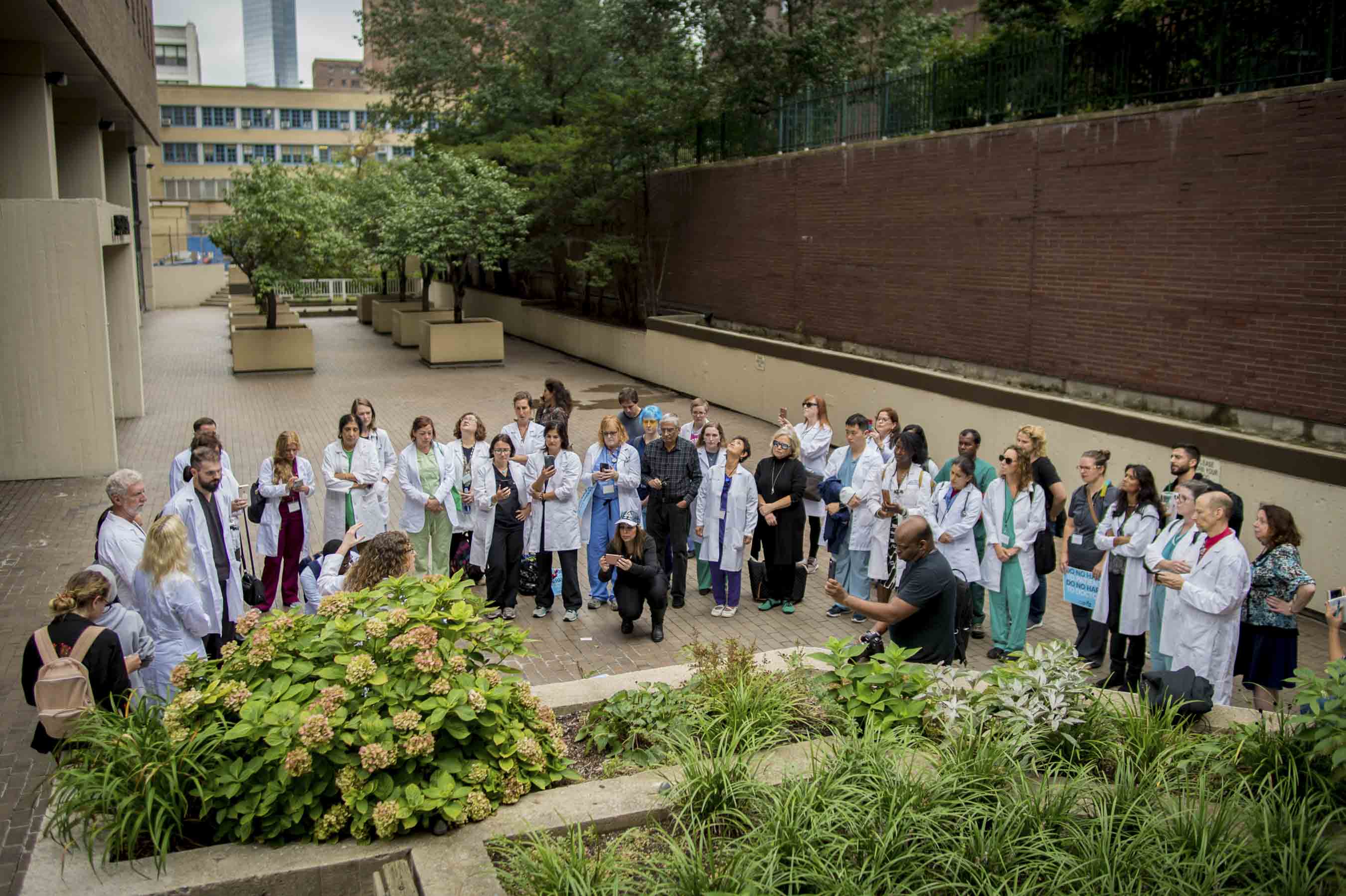
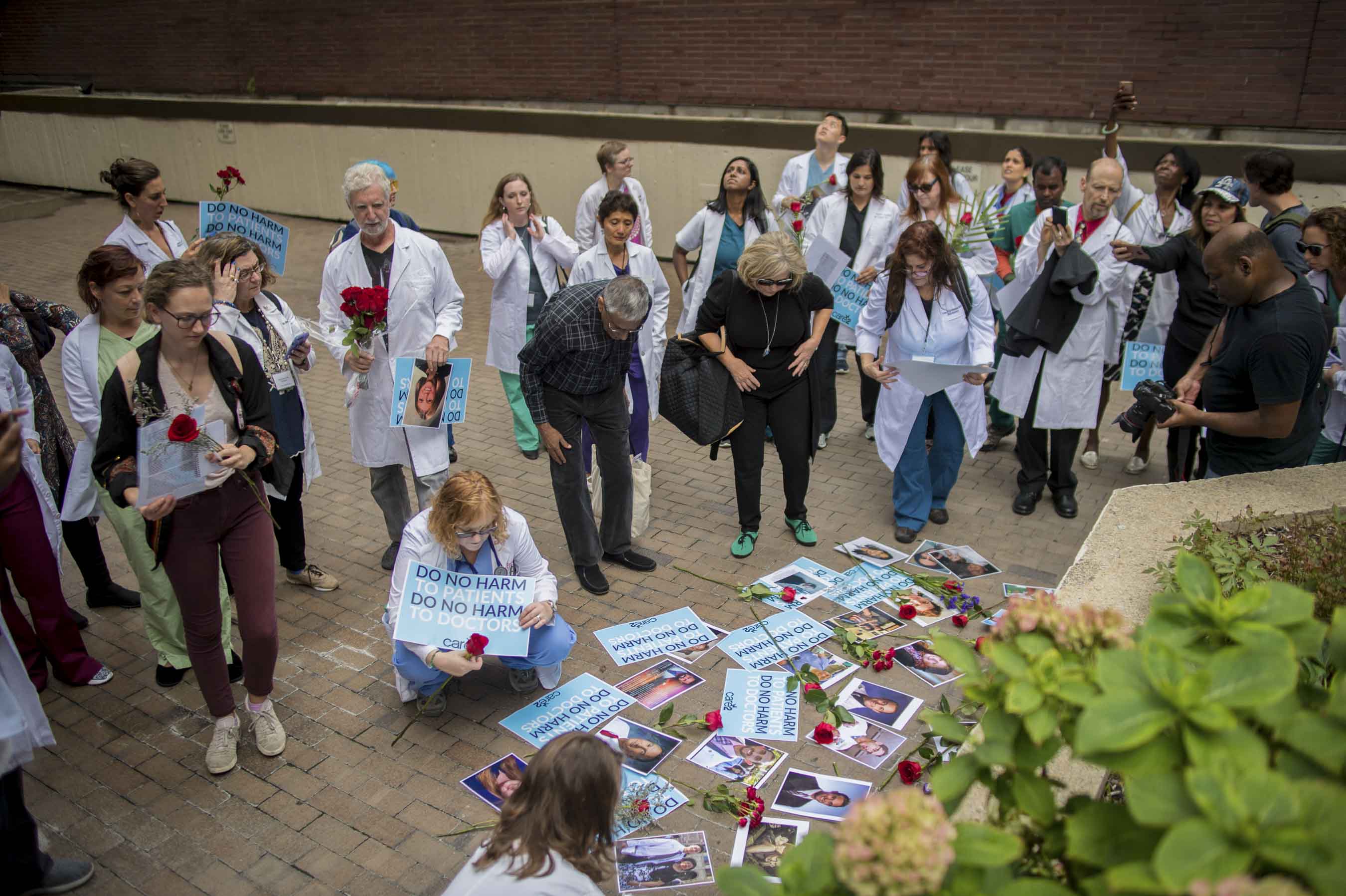
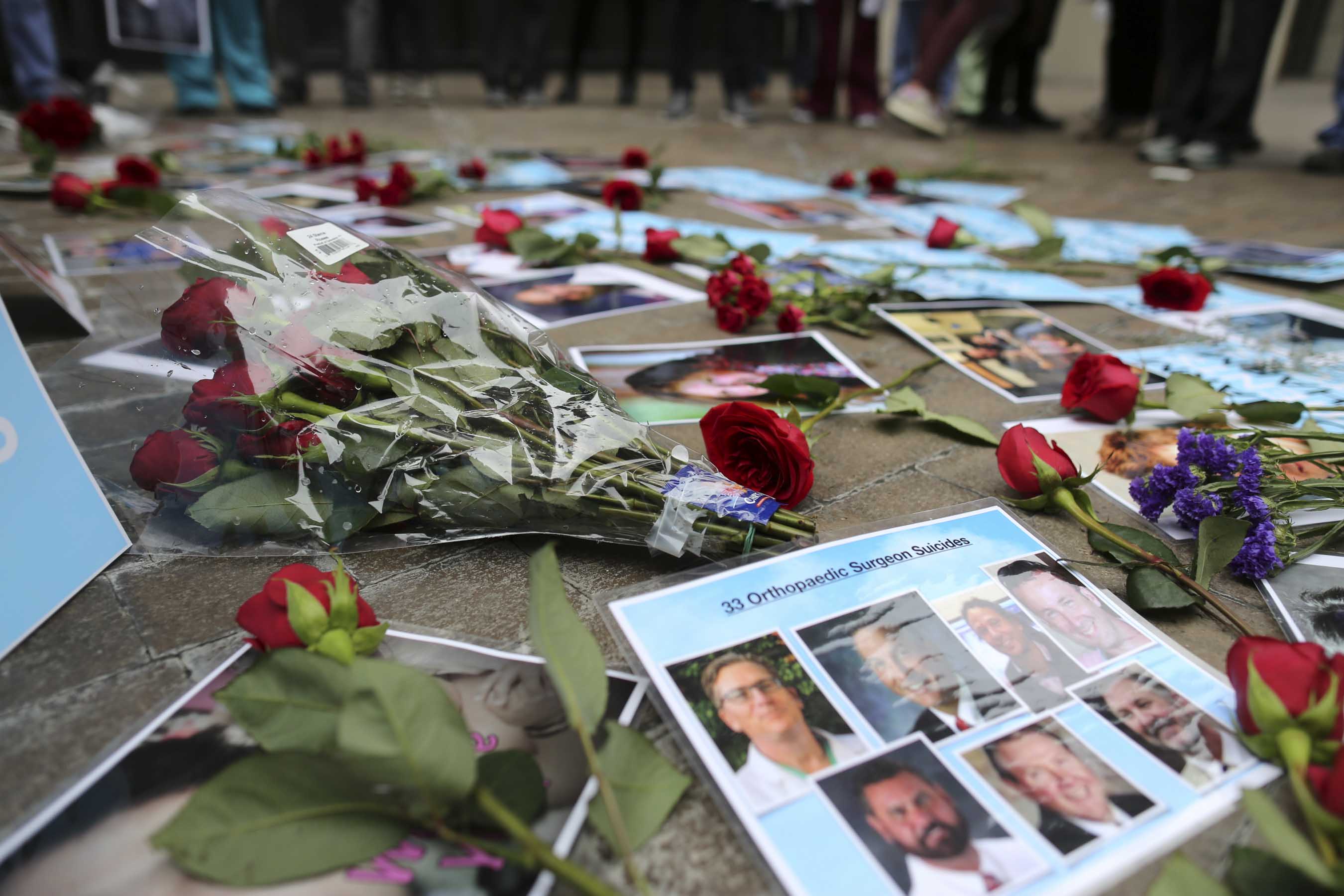
Dr. Pamela Wible: We are gathered here today to honor the many people that we have lost to suicide in medicine and in particular, Dr. Deelshad Joomun.
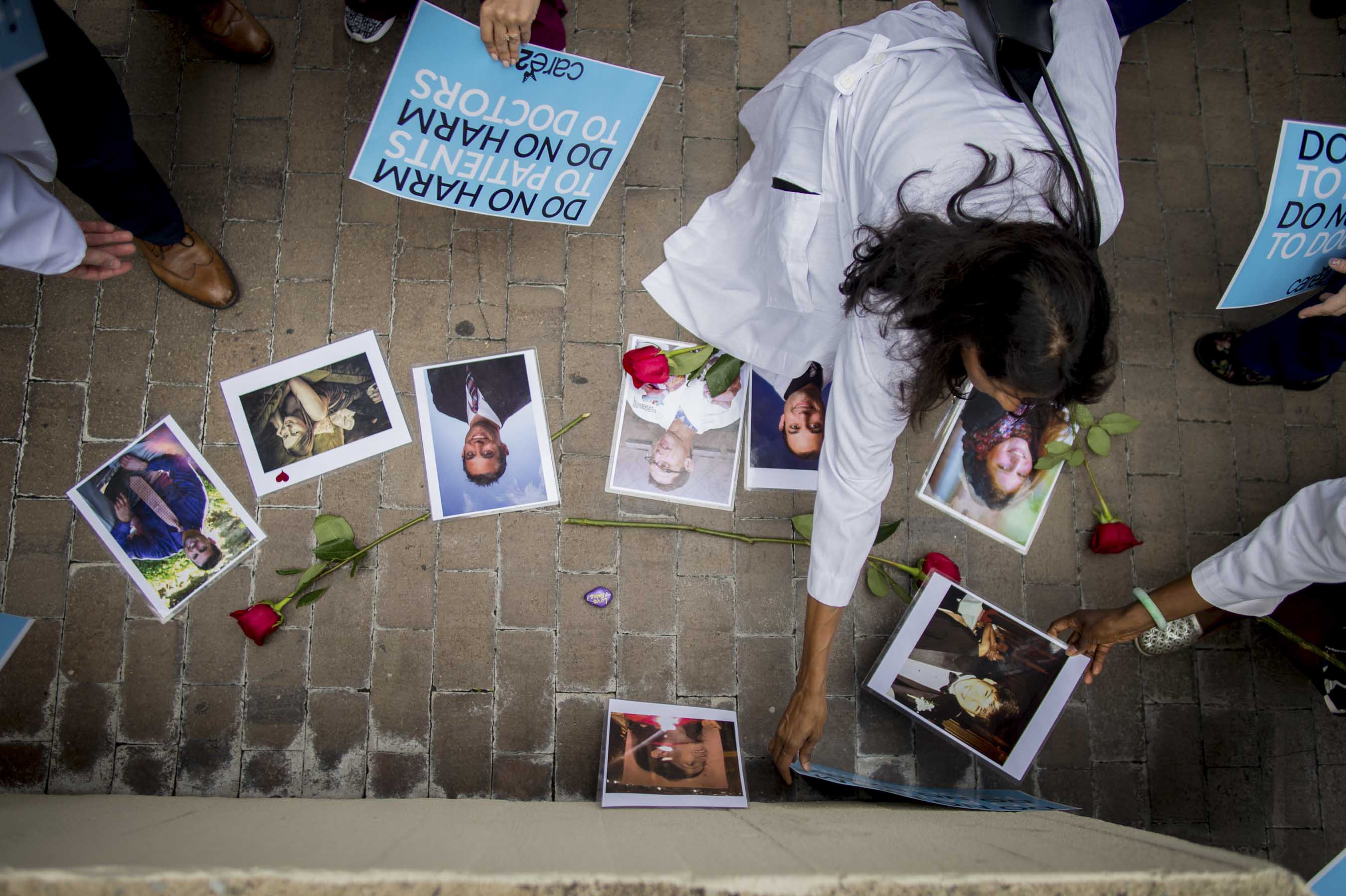
This is the spot where she died in January. It was a Thursday afternoon at three o’clock.
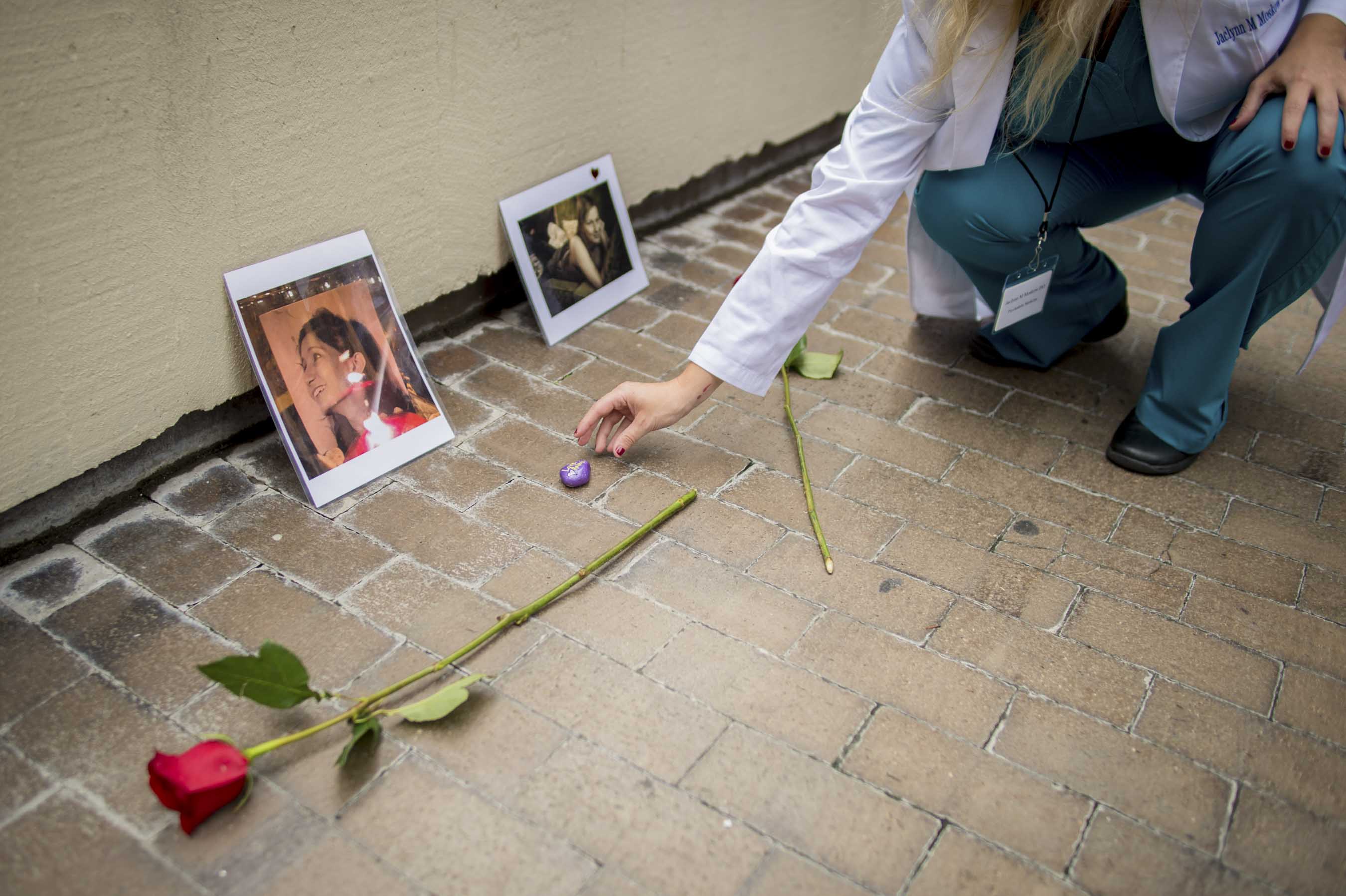
And today, Thursday, September 13th, we traced her very last footsteps that she walked to come here leaving Mount Sinai Hospital around 3:00 PM.
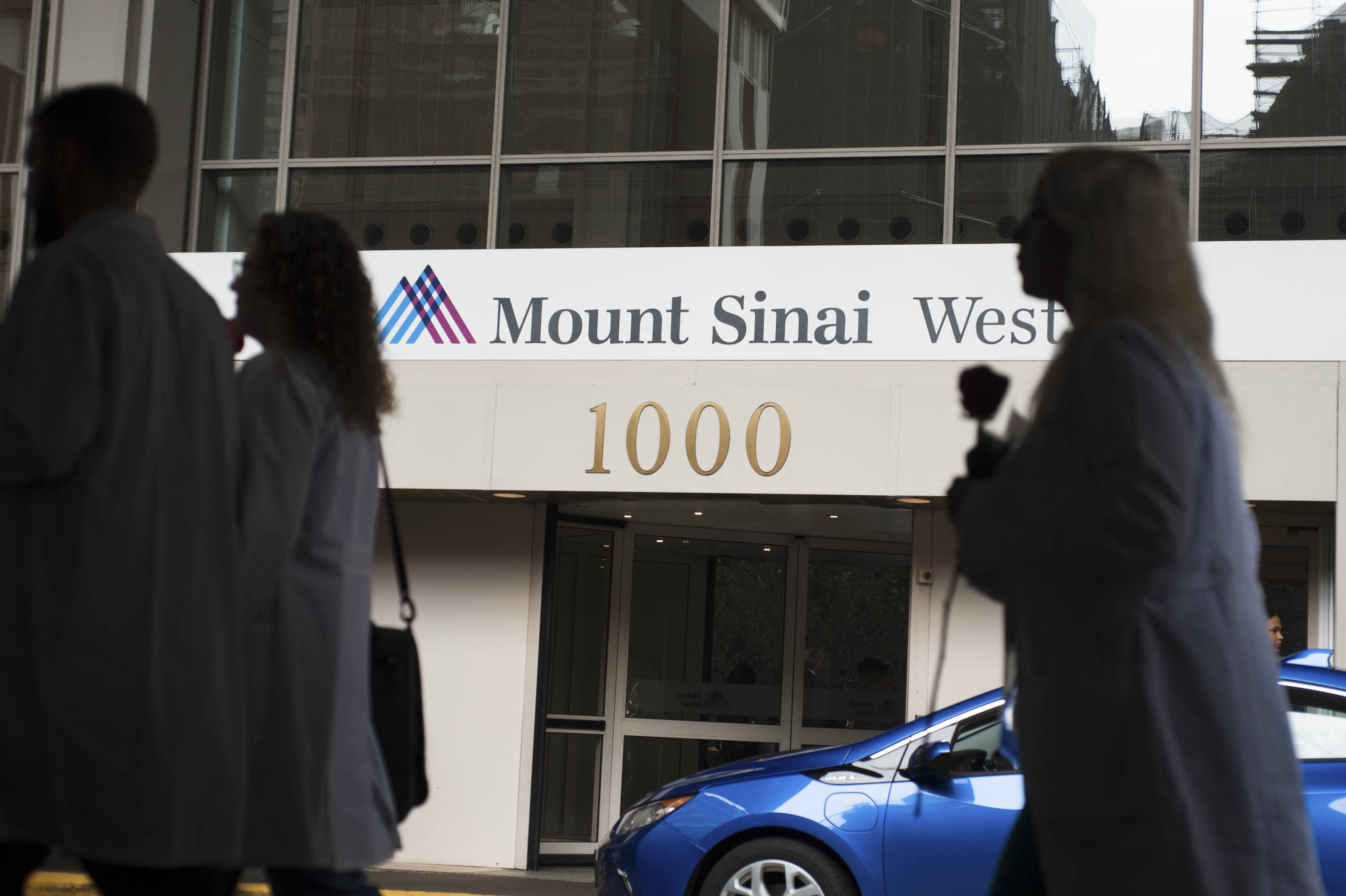
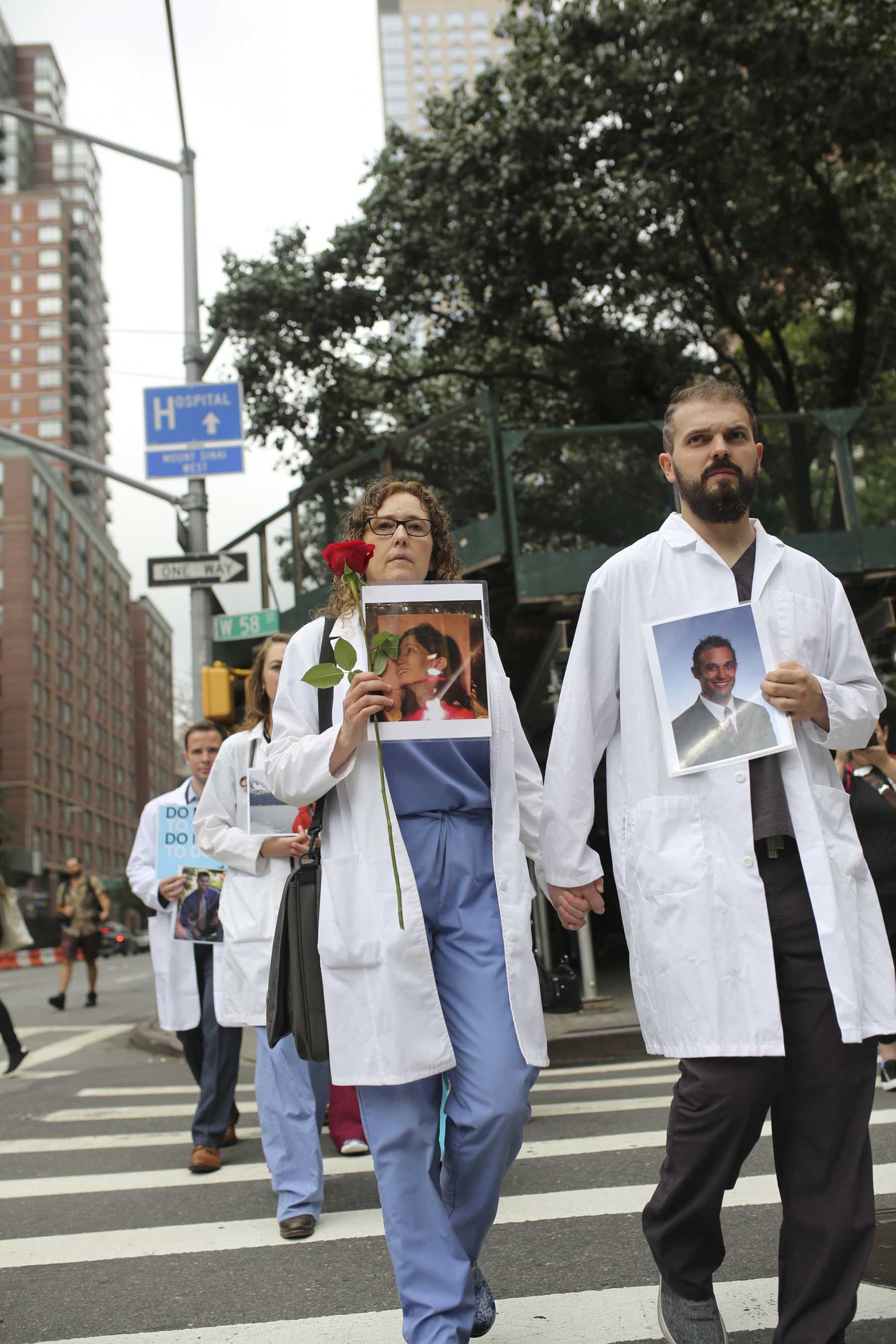
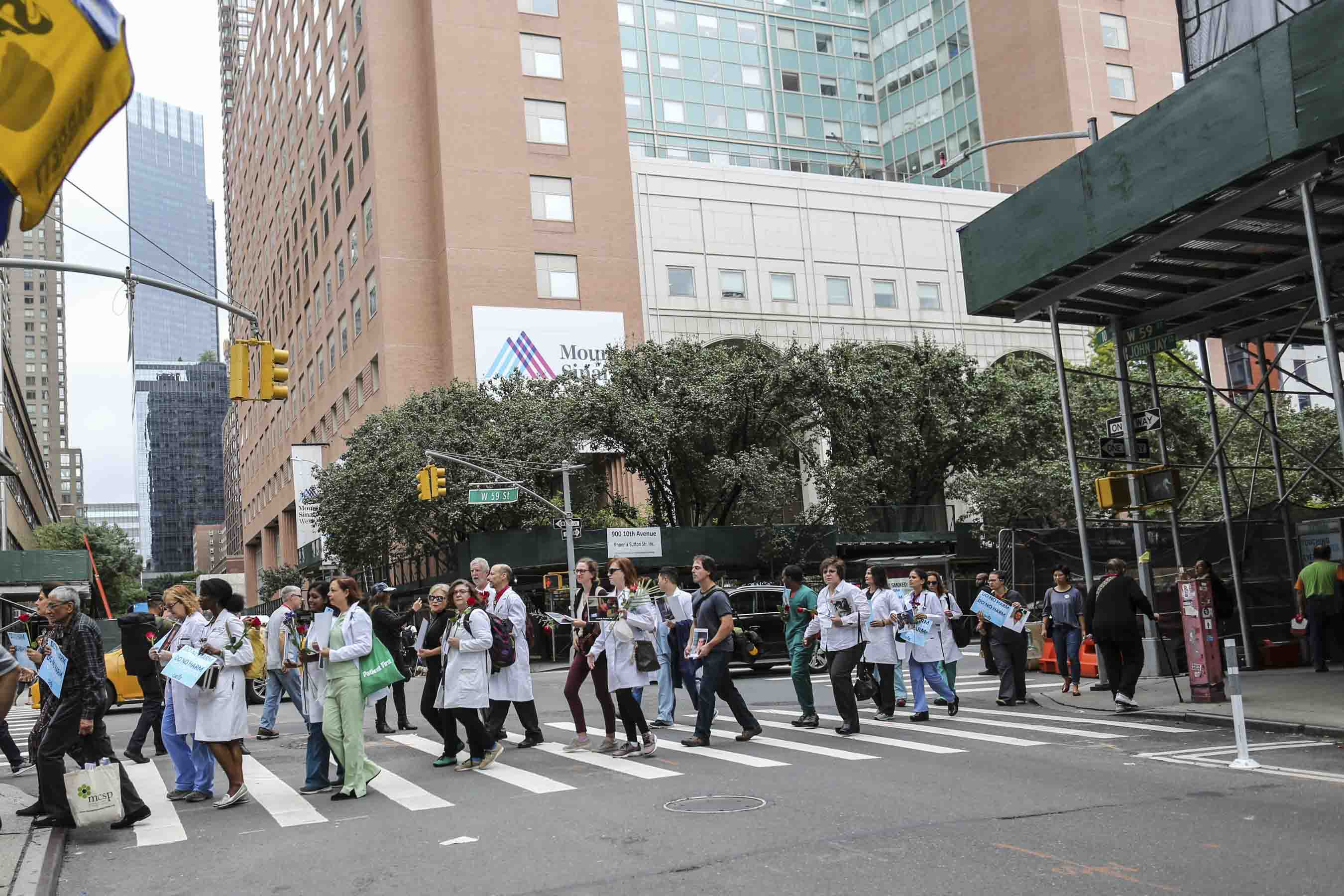
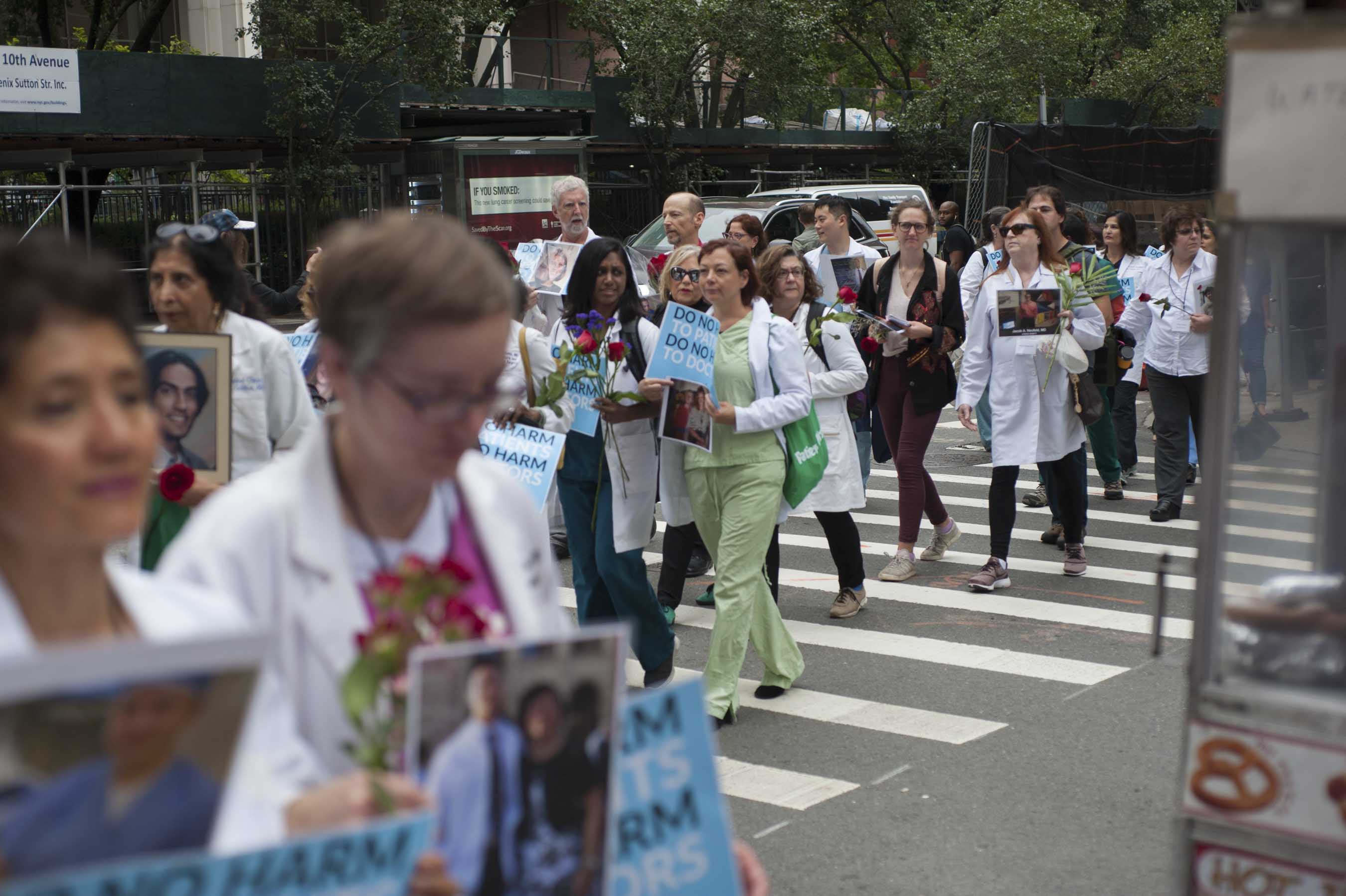
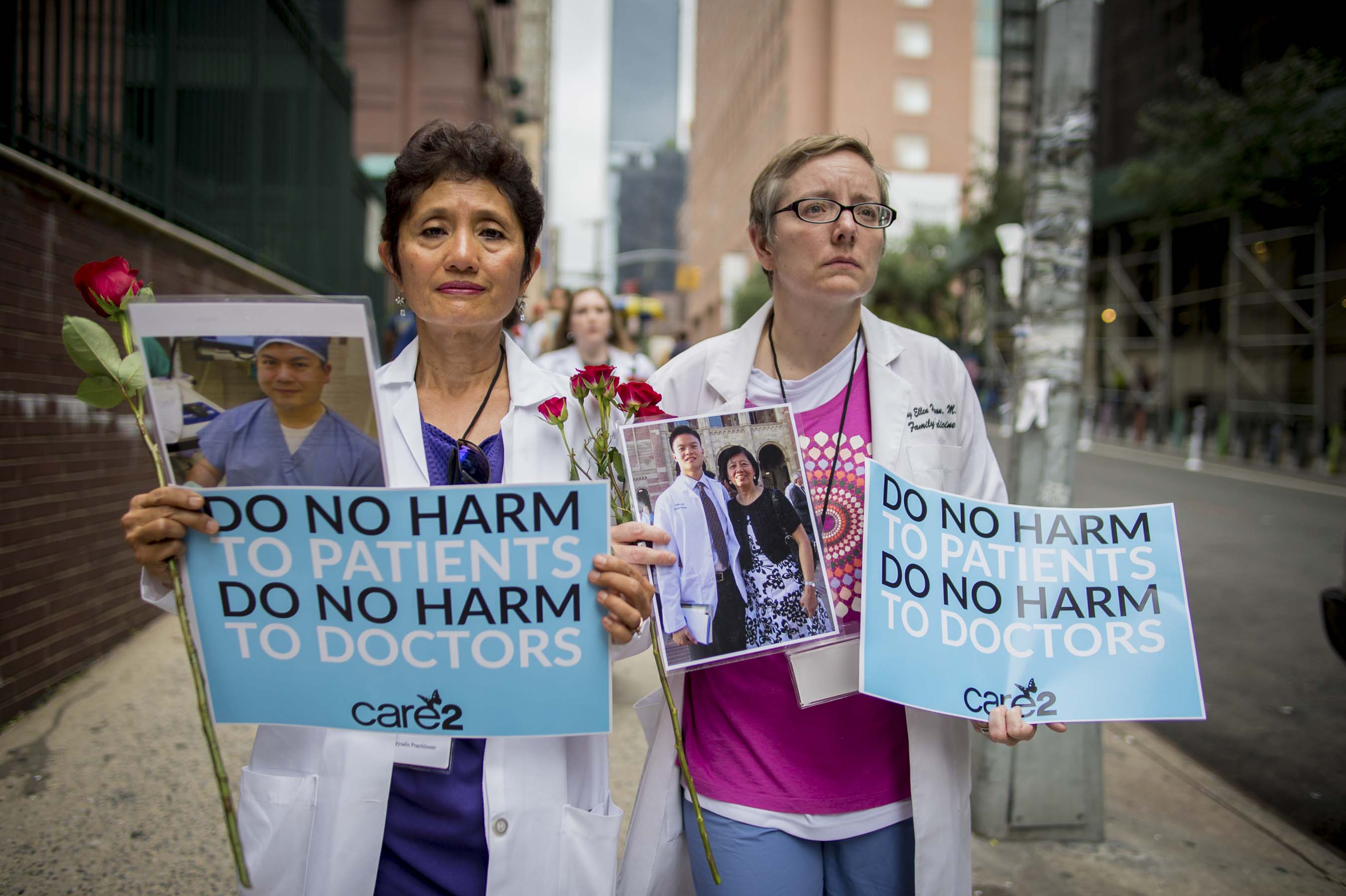
And she went into this building where she lived for six years and pressed the elevator to go up making her way 33 floors to the roof.
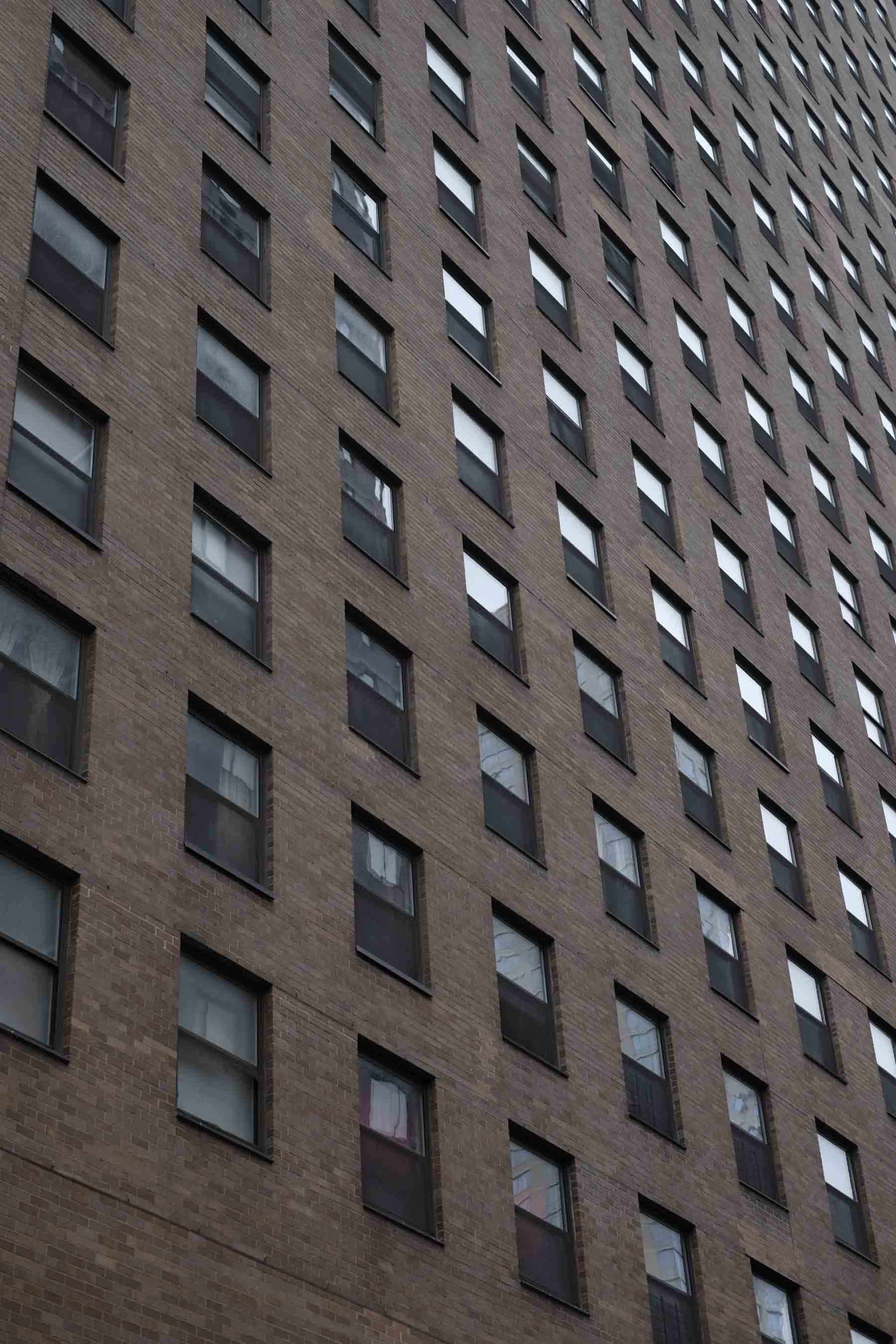
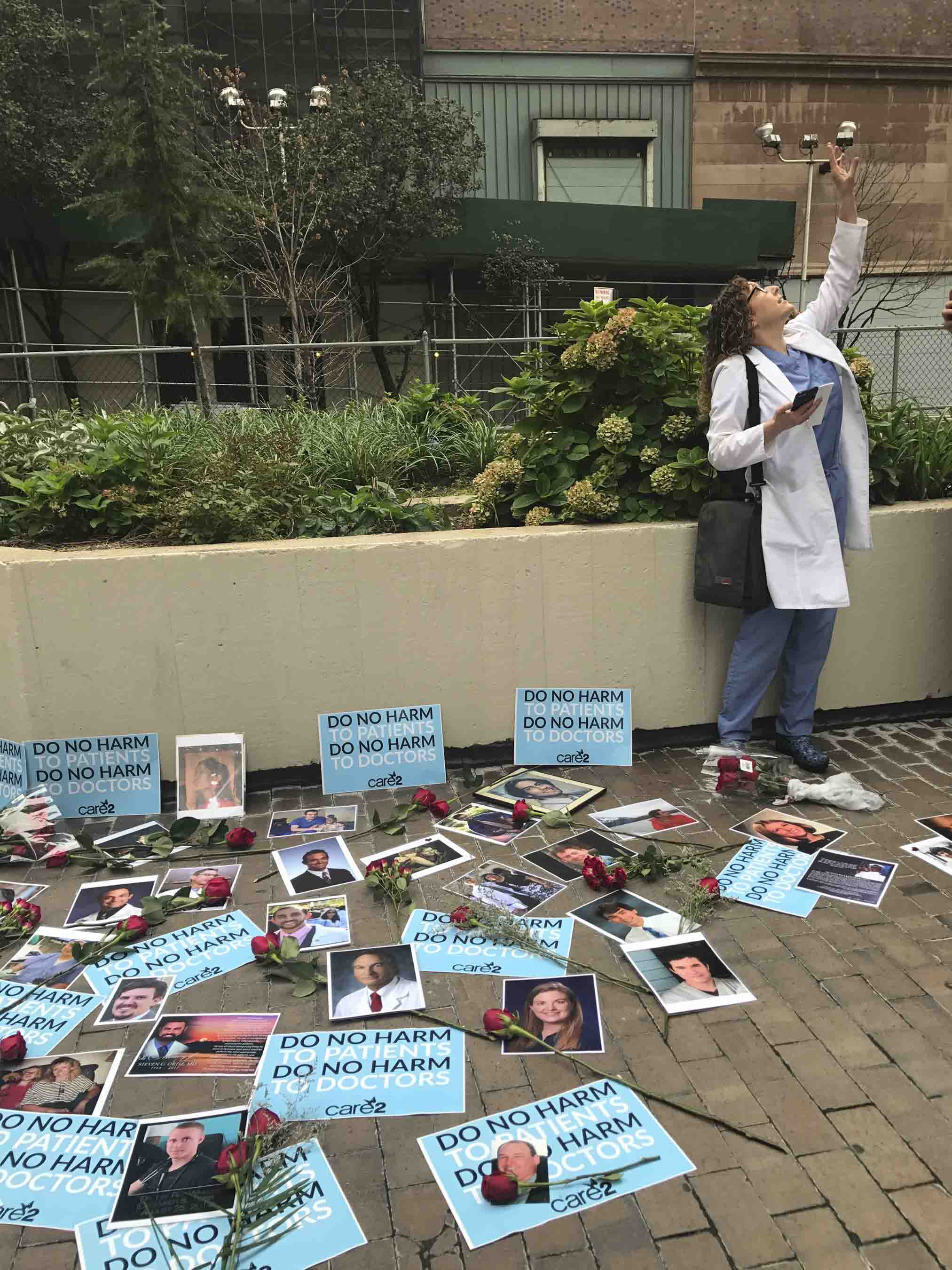
Dr. Deelshad Joomun then stepped off the roof dying in this spot right here.
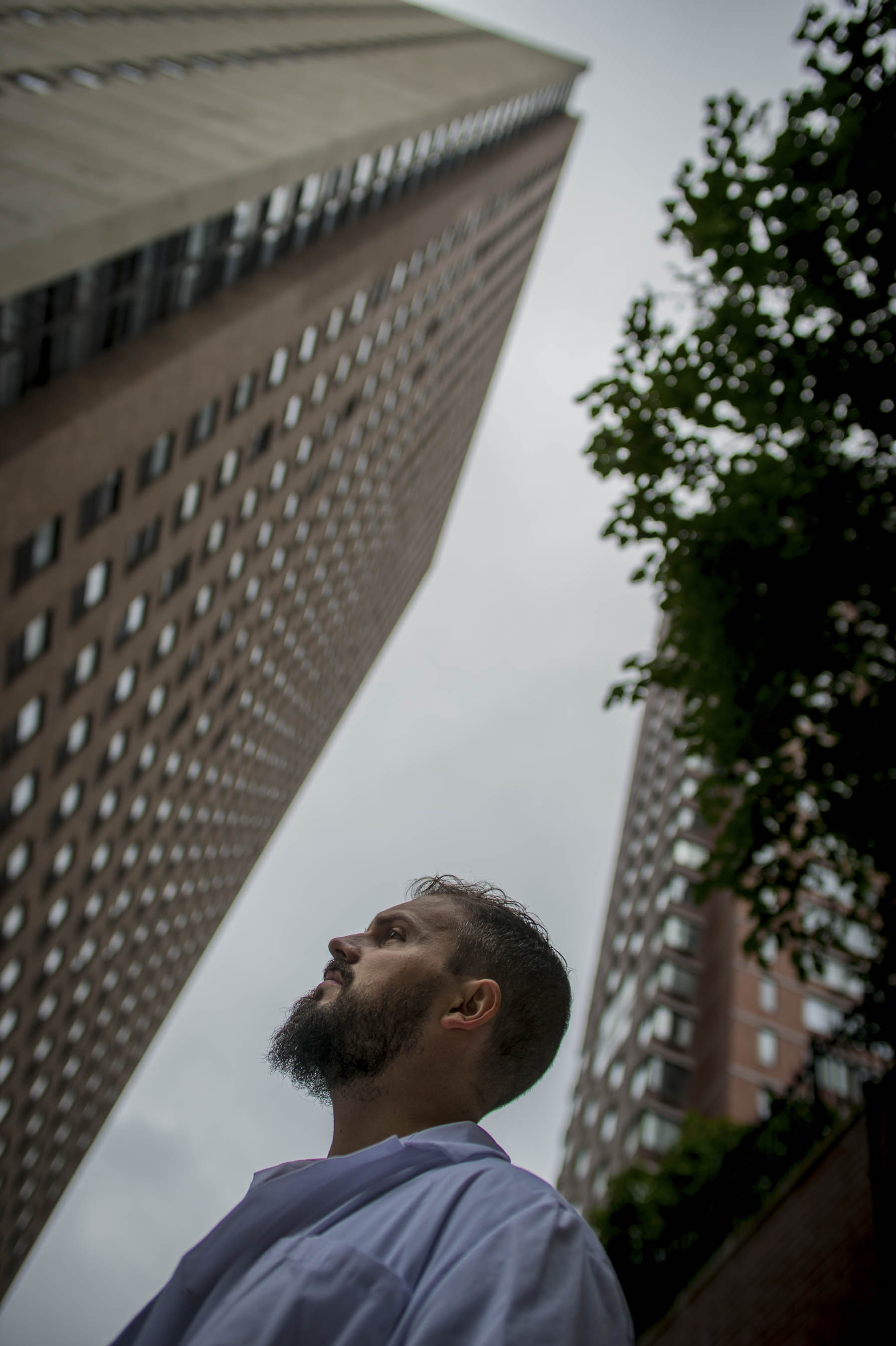
This amazing, brilliant, beautiful physician, Dr. Deelshad Joomun, was a pioneer in our profession—the first female interventional nephrologist in the United States. That meant she completed her internal medicine residency, nephrology fellowship, and then advanced fellowship in radiology so that she could do very specific procedures on the kidney (for those of you don’t know what interventional nephrology is). I never knew there was such a specialty.
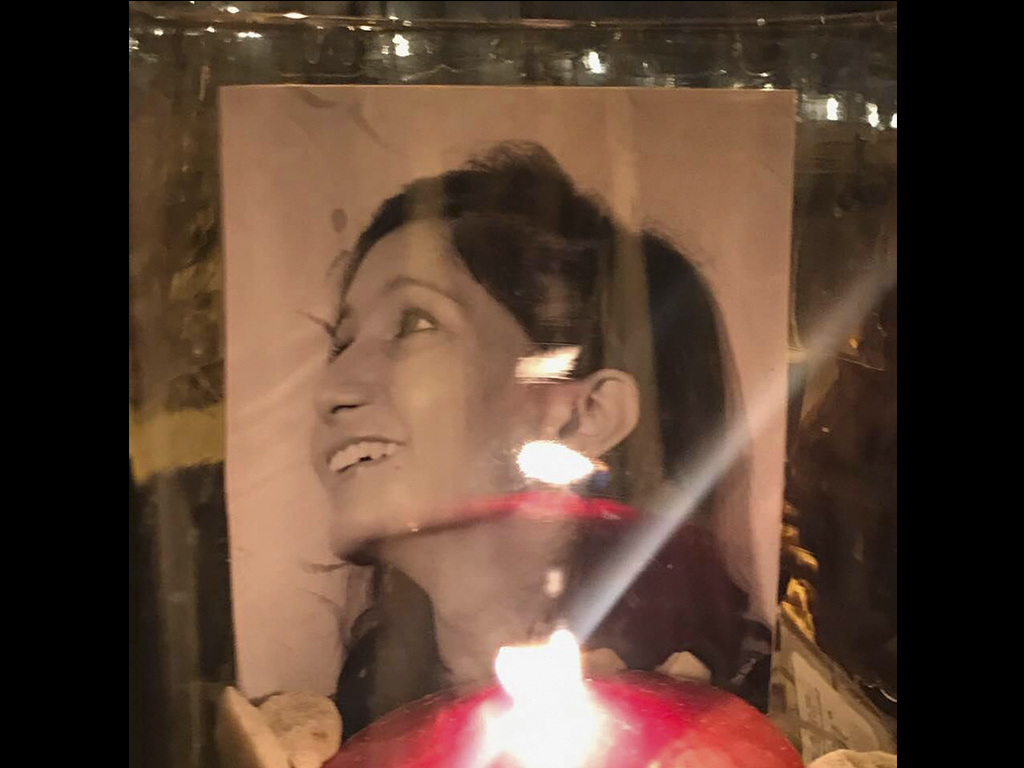
She was very passion-driven. It was her soul’s purpose to be a physician and she was extremely happy as a physician. Her name Deelshad actually means “happy heart.” An idealistic happy person who loved being a physician and loved serving humanity.
How in the world did somebody three days into her first job as an attending—she was only there at Mount Sinai for three days—how did she end up wanting to walk across the street in the middle of the day—in the most populous city in the country—and die this way?
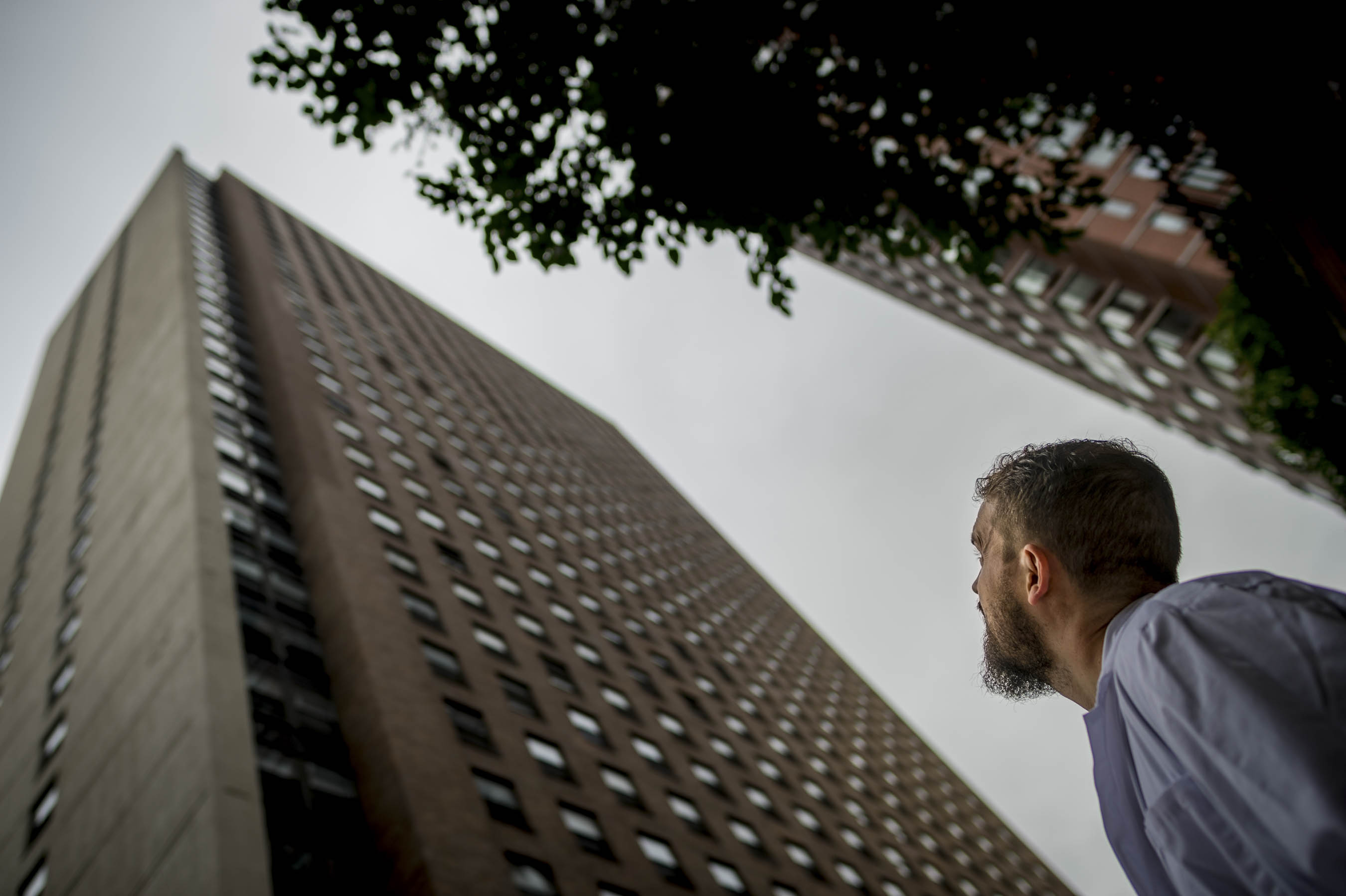
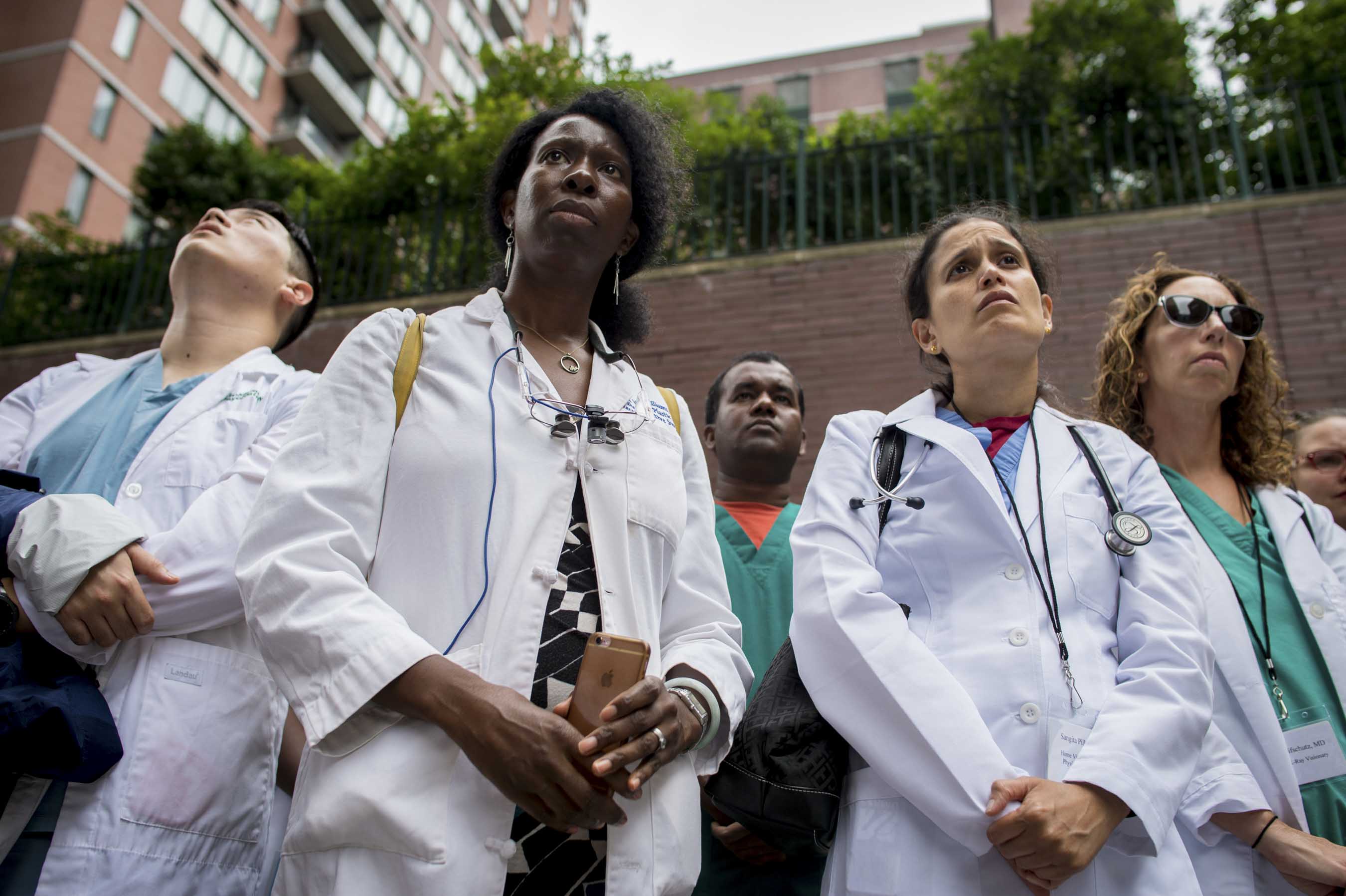
I have to tell you she’s a very private woman. She’s a Muslim woman who has zero social media presence. I couldn’t even find a picture of her until January 26th I actually flew here and I led her eulogy and candlelight vigil just a week after she died.
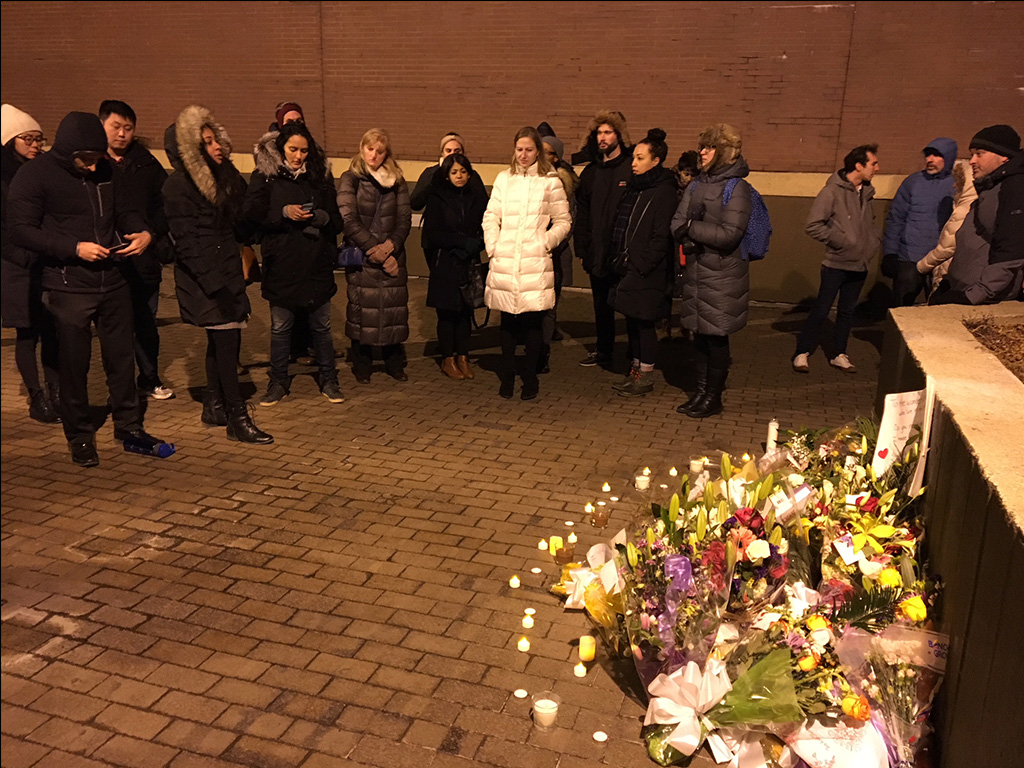
The first time I saw her was when I looked down right here during a candlelight vigil and I saw her picture taped to the back of a candle. So I took a photograph of her picture and that’s where this photo came from.
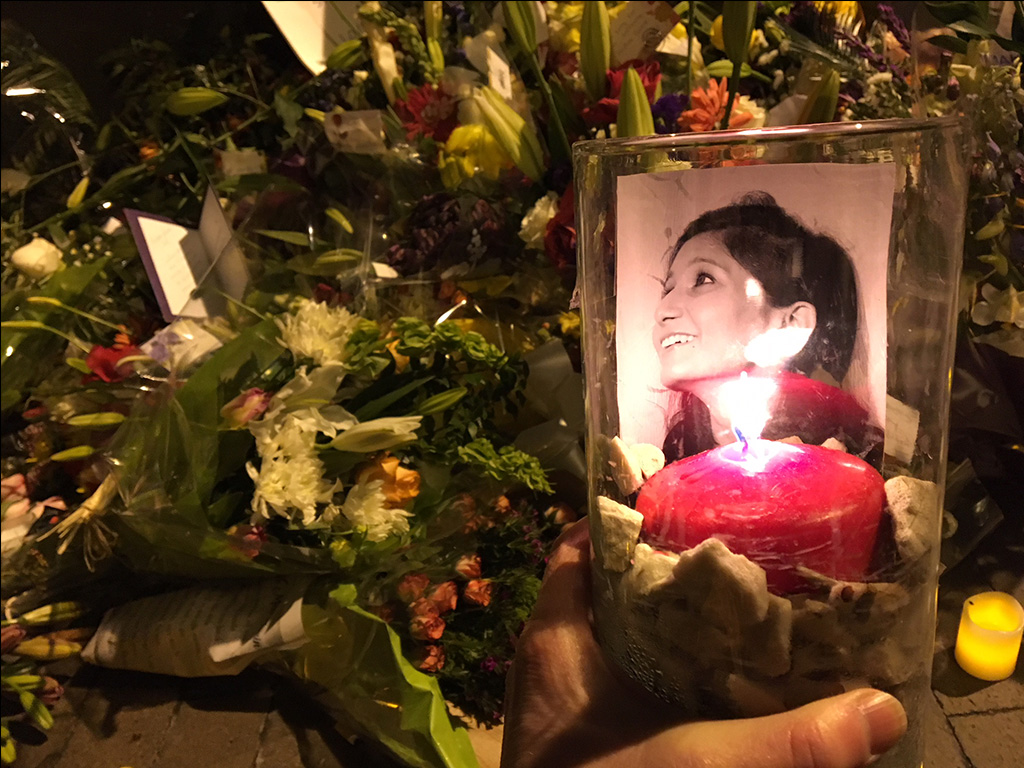
She’s a very private woman so I just want you to think about this . . .
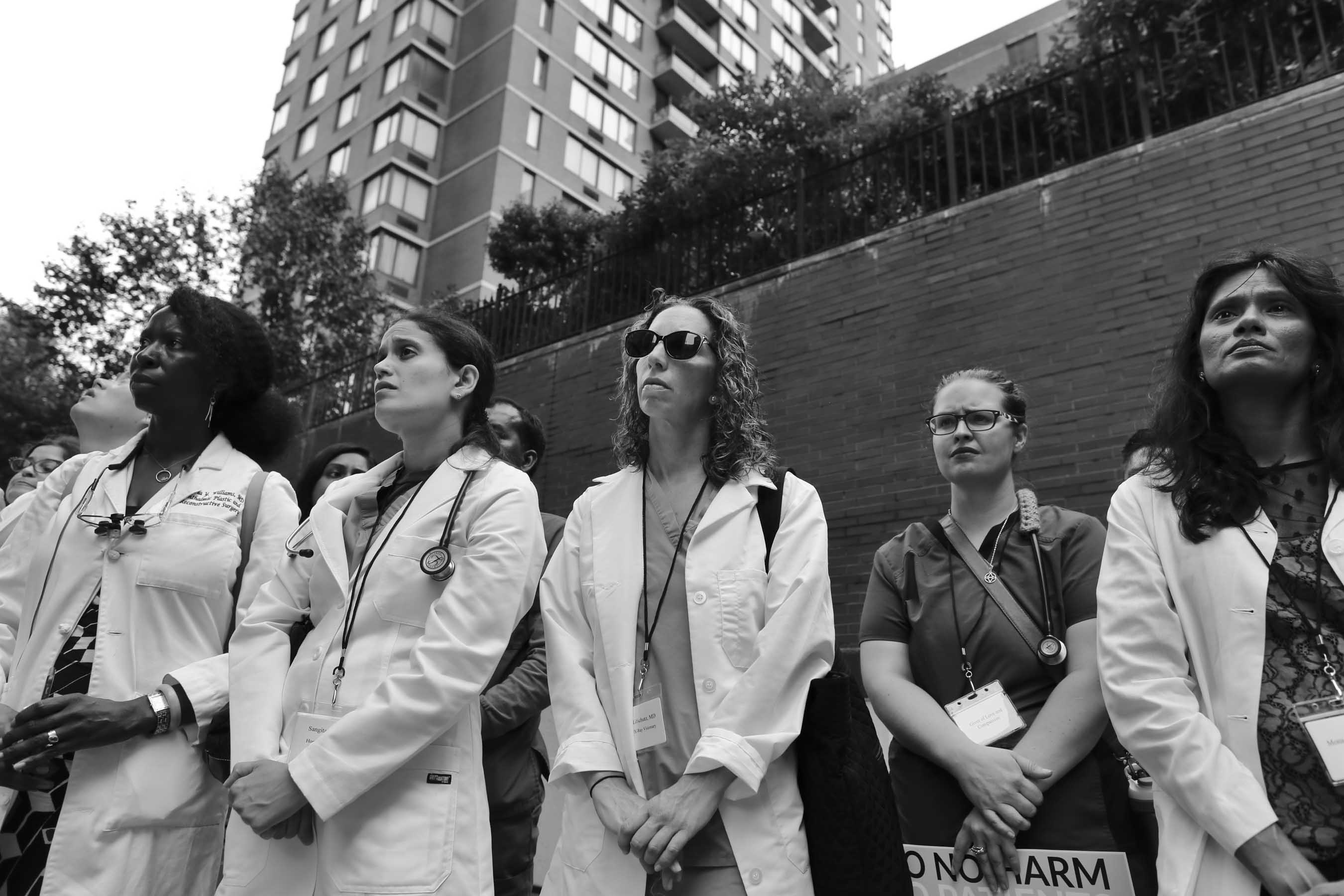
What would take a very private person to the edge of a rooftop?
What would take a woman who loves her profession as a physician on her third day of her dream job that she worked her entire life—to take her life?
What sort of circumstances would it take for somebody (who, by the way physicians can easily die peacefully at home by overdose; we all know how to do this with over-the-counter medication) so what possibly would disturb somebody to the point where they walk across the street and go up to this rooftop to choose such a public and painful death?
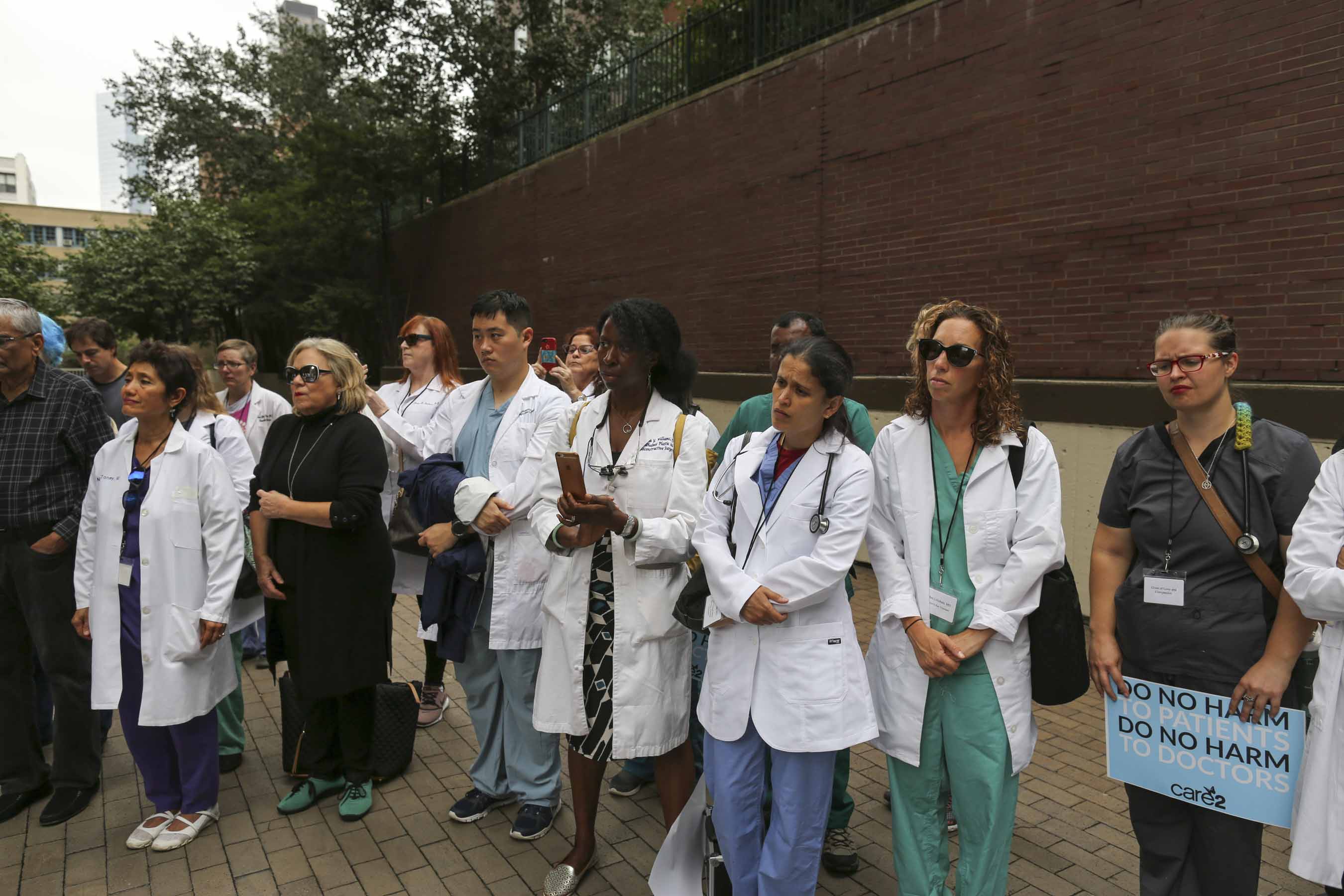
I don’t even have the answer. I have only bits and pieces. The reason I don’t have the answer is that none of these deaths have been investigated—which pisses me off. [Correction: Doctor suicides are rarely investigated. I do know of one currently being investigated by the FBI]
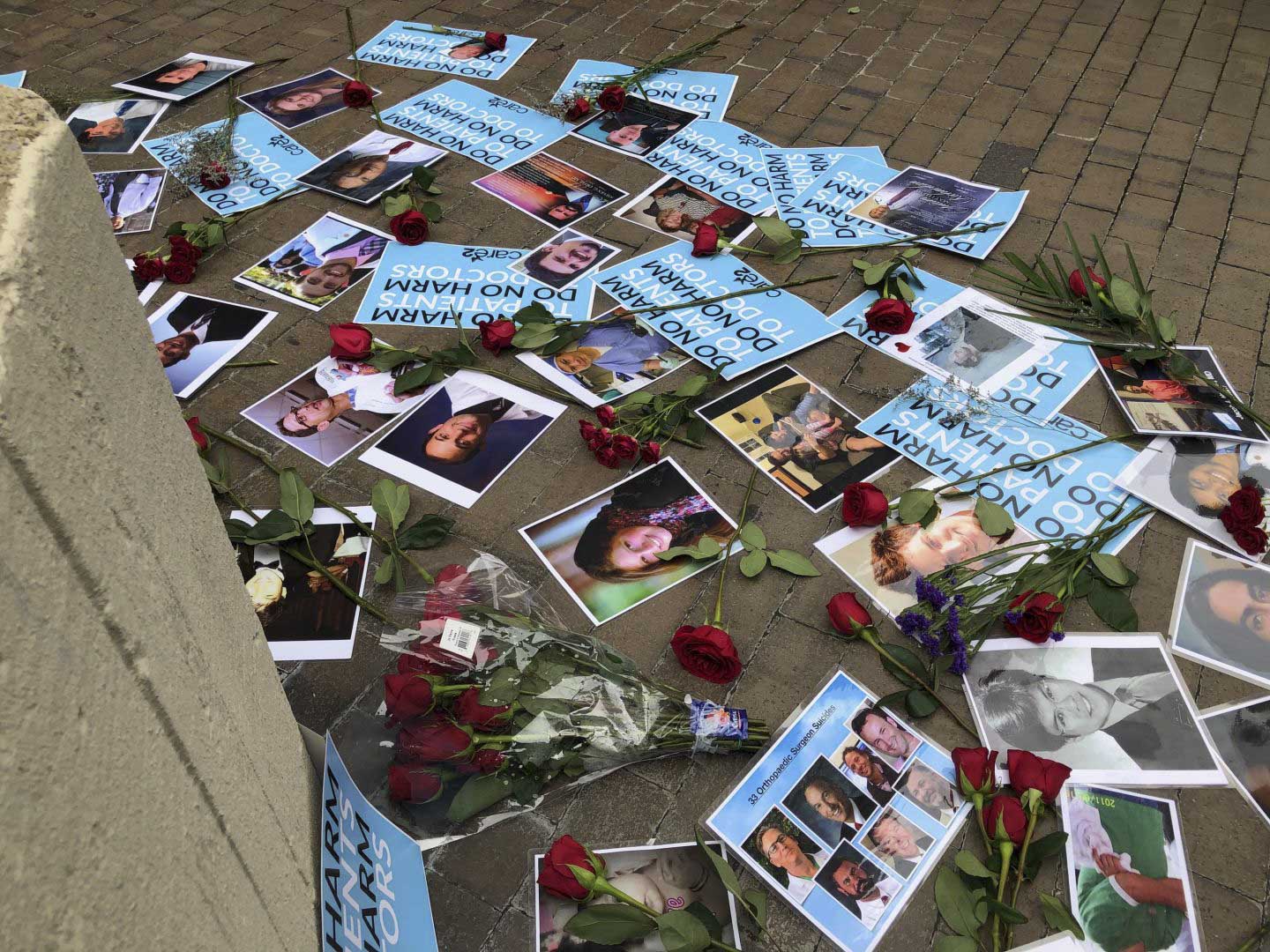
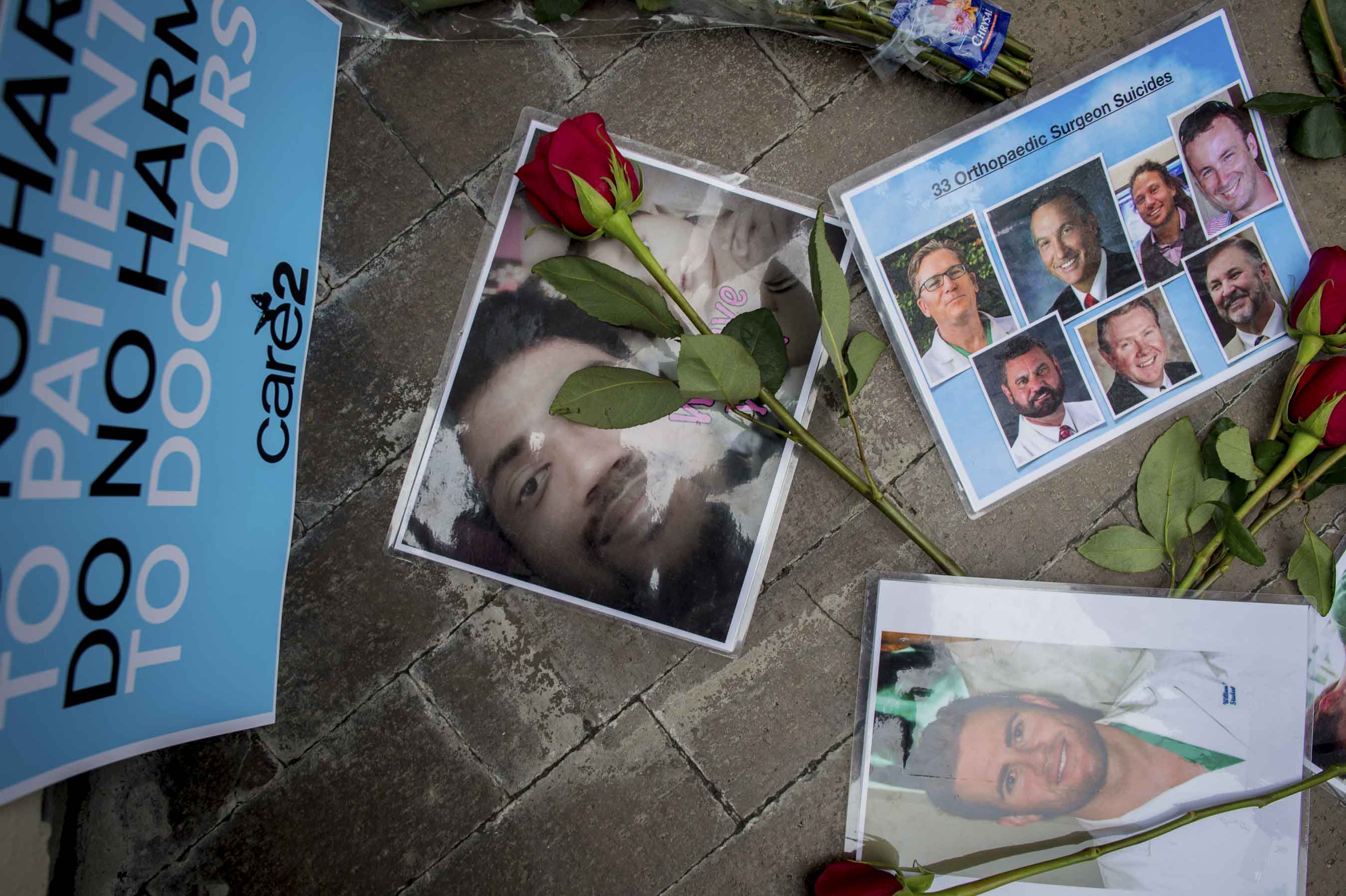
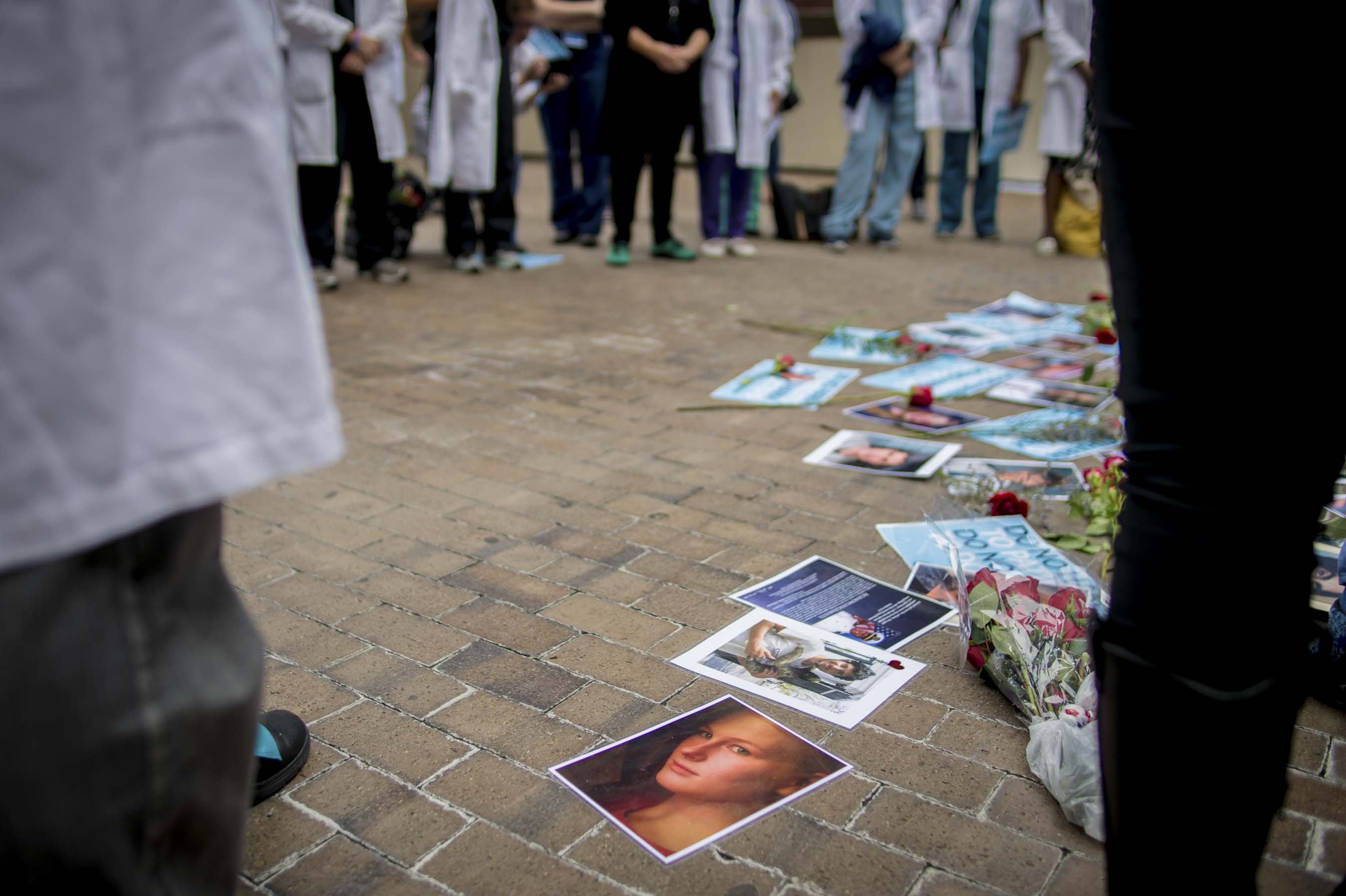
Does that piss anyone else off?
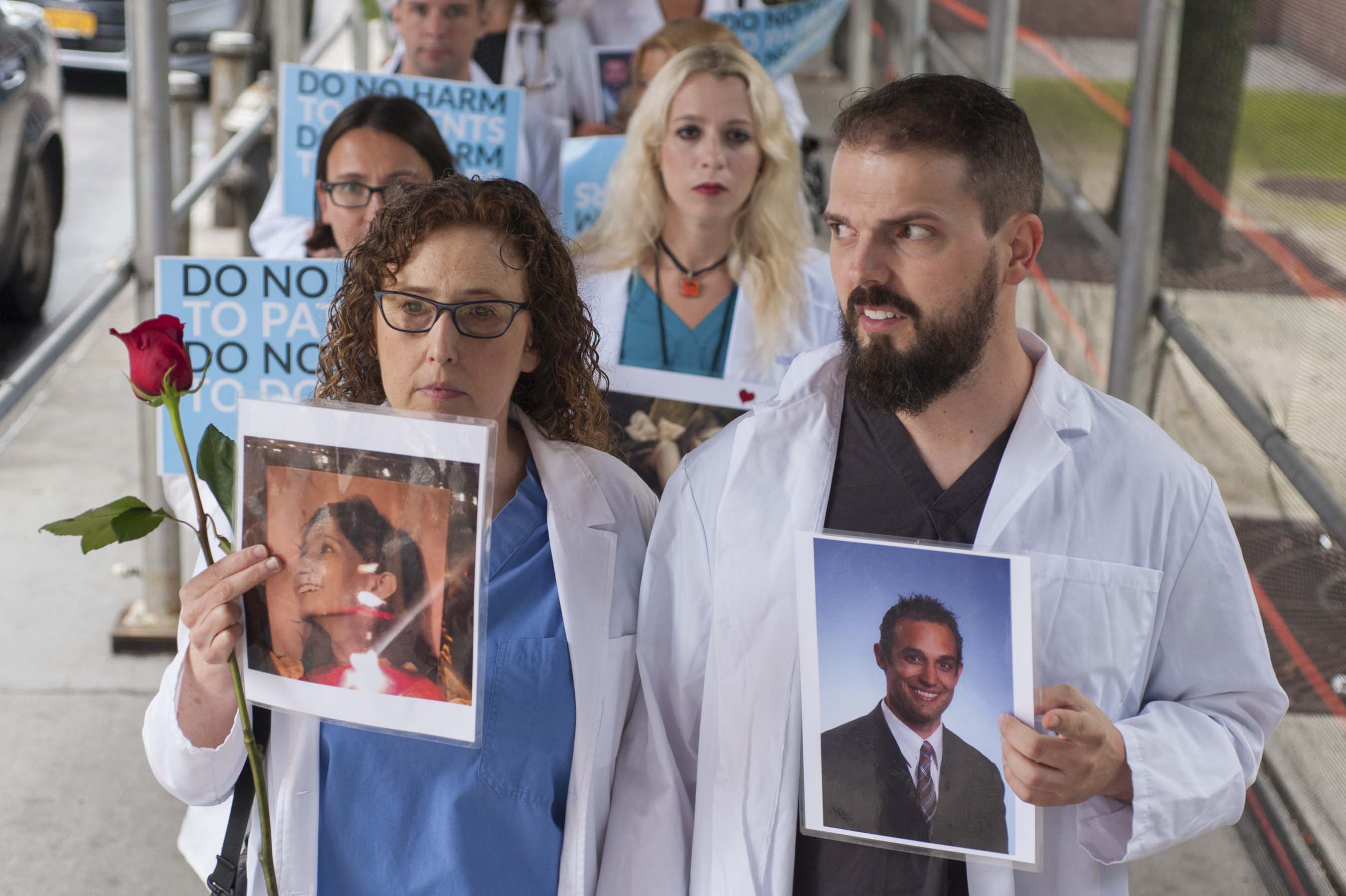
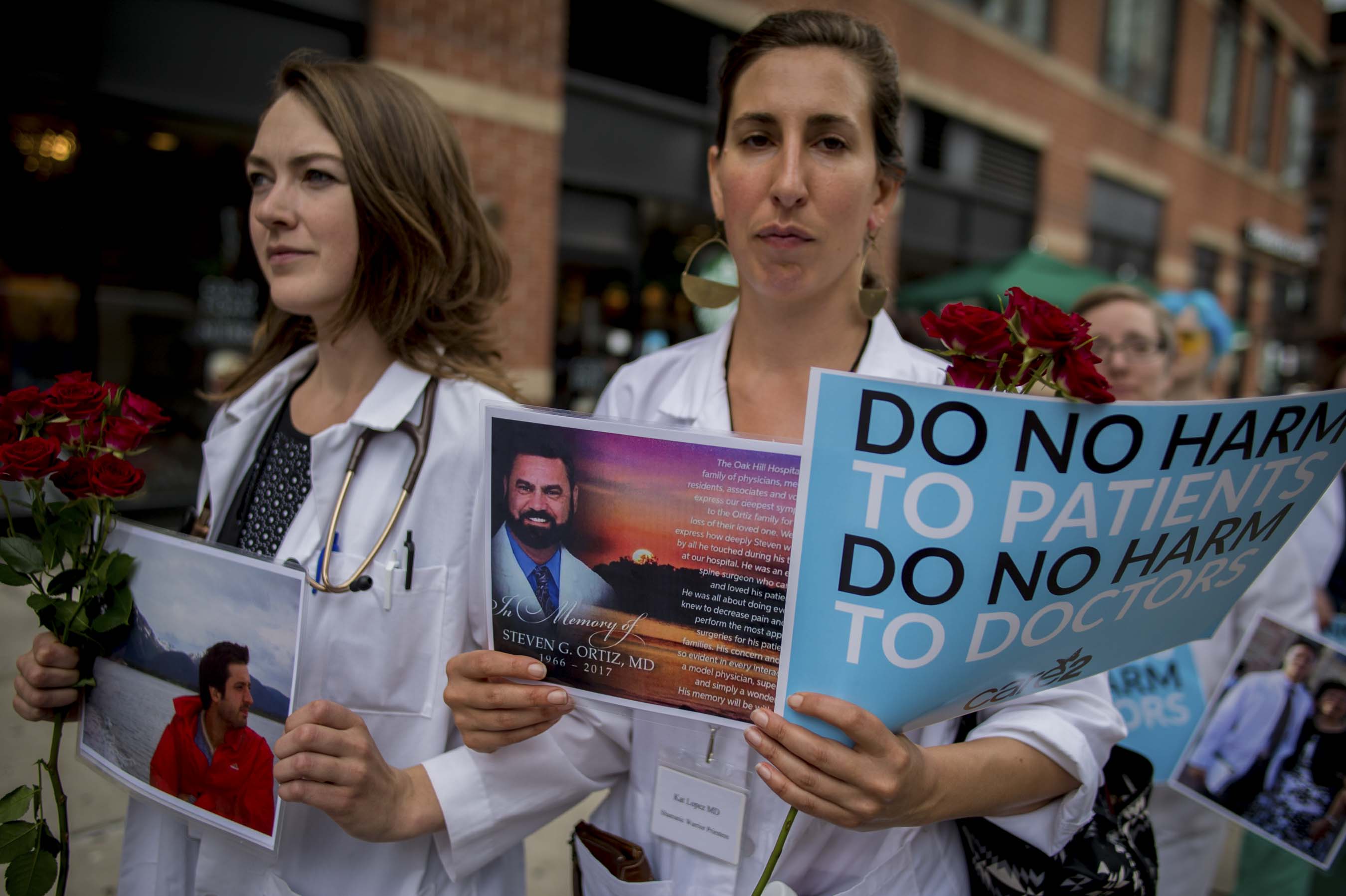
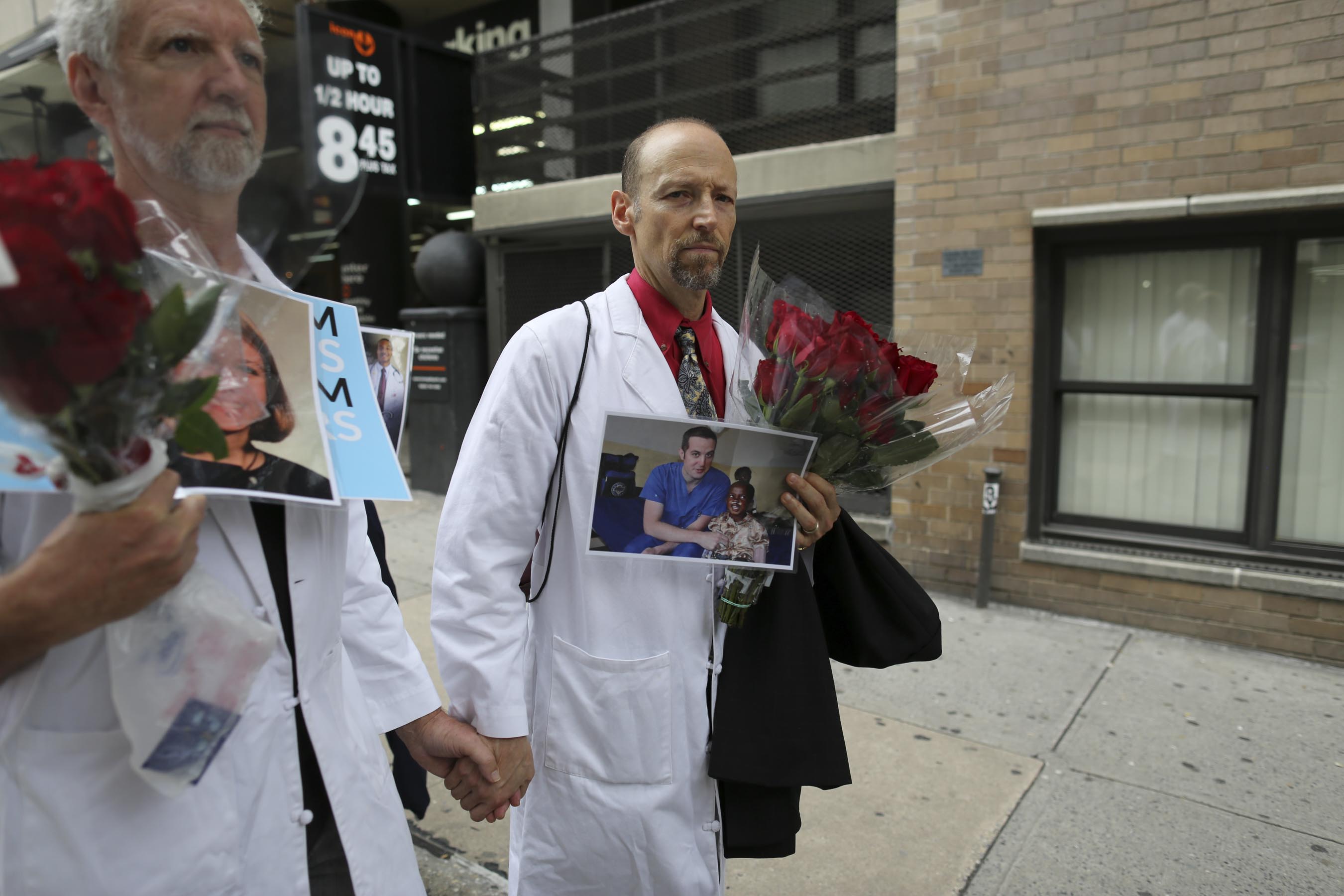
When doctors die in hospitals (there are many dead doctors found inside hospitals) the police reports indicate the death is “not suspicious.” They actually print that in the media.
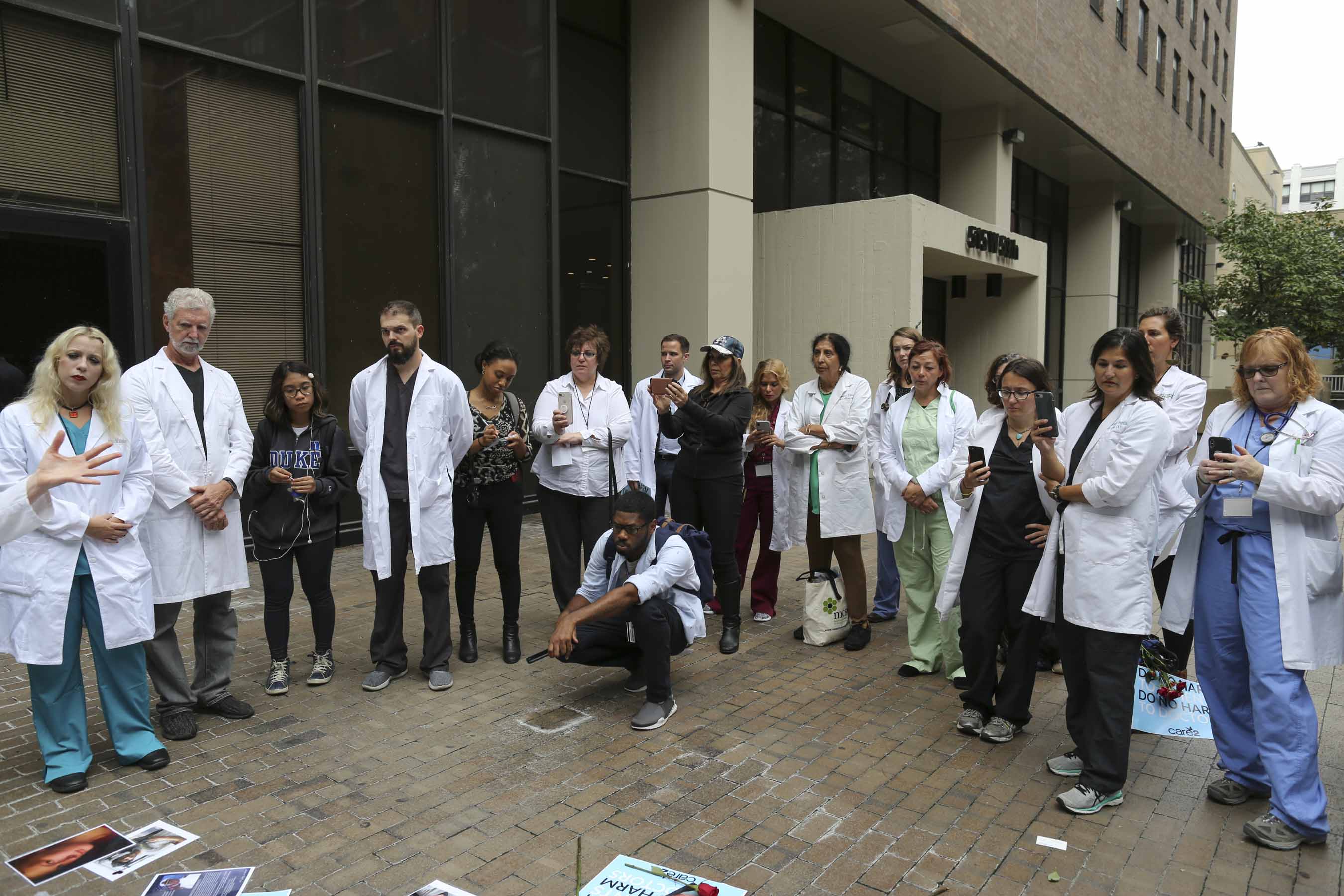
Are you kidding? Is this not suspicious?
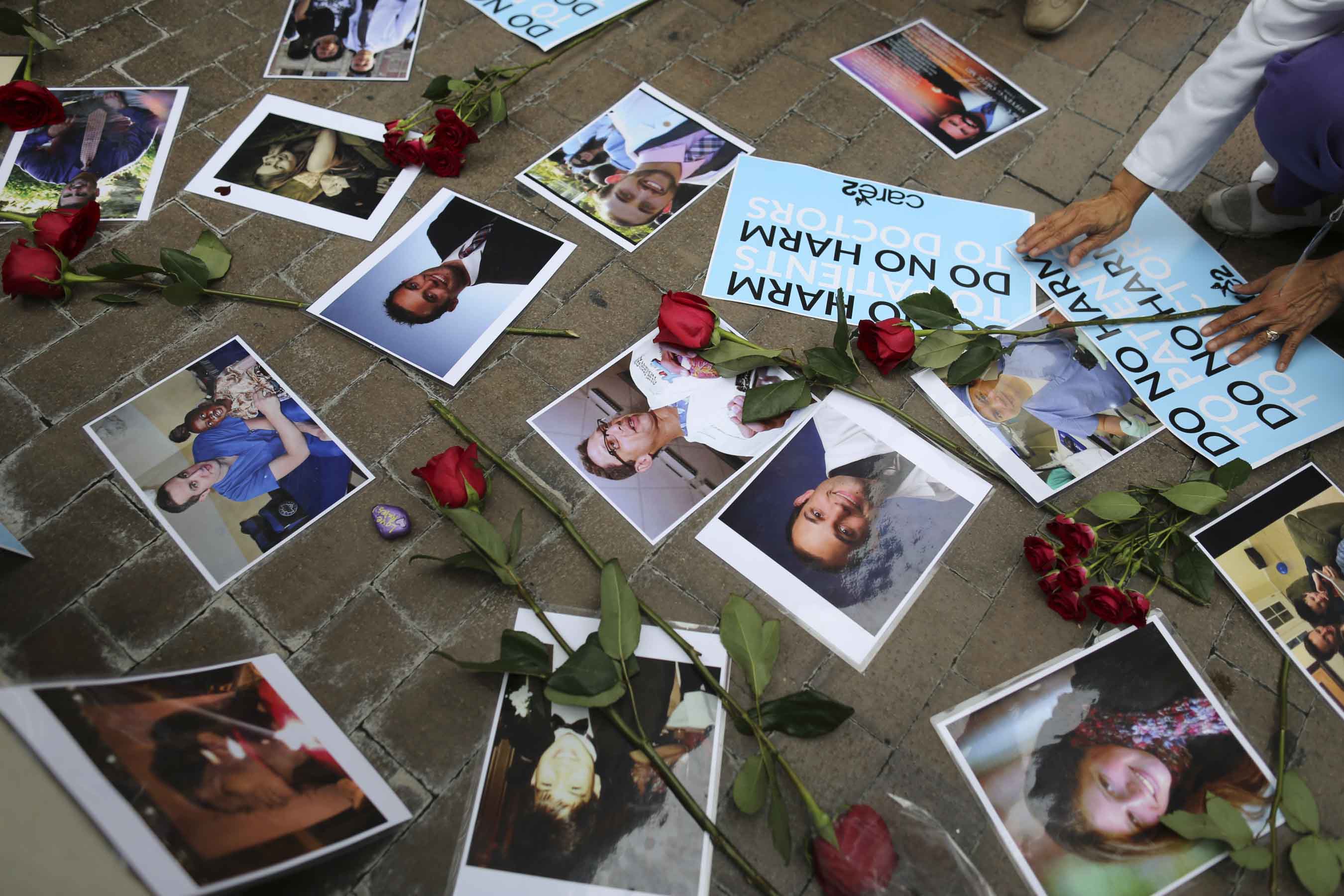
Look how suspicious this is.
Look at all these people who have died who had no memorial.
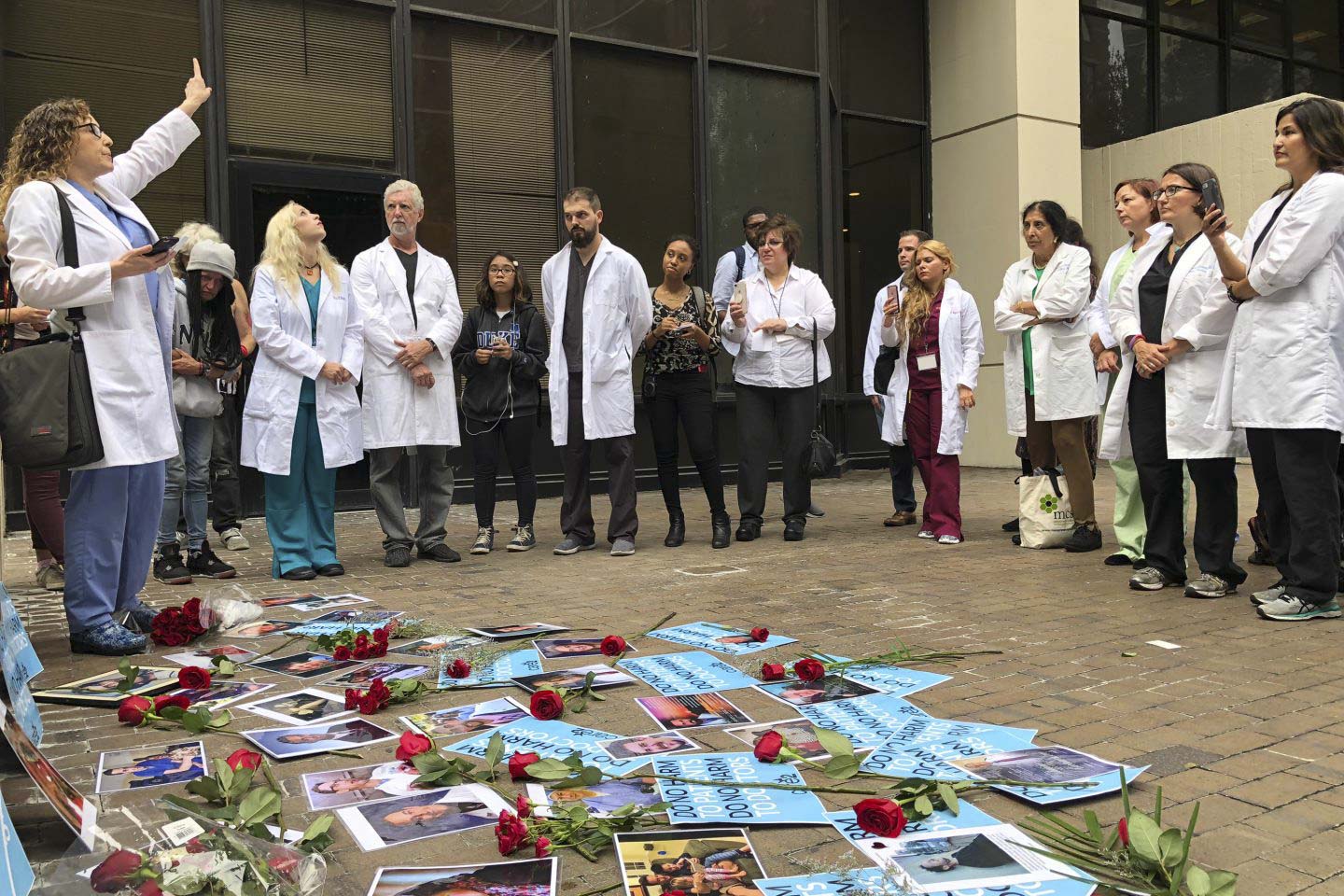
Most just covered up. This woman was covered in a tarp and left here for three hours right here with her hand hanging out of a brown tarp. Then they threw her in a body bag.
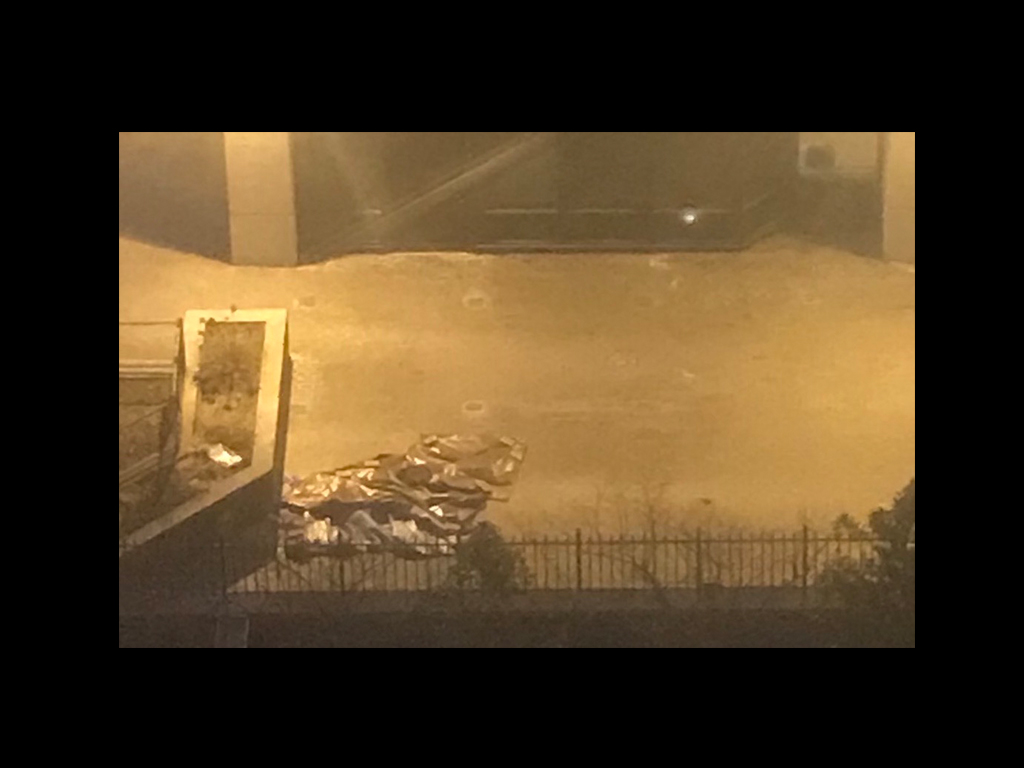
If I didn’t show up to do anything that would have been it. How did I find out about this? Within an hour of her body landing here in this spot (which is a loud noise by the way that thankfully I’ve never heard up close and personal). In a city like New York people think of bombs and they’re looking for a bomb but they found a doctor. She was in her white coat by the way.
This is a very public suicide by a physicians who wanted everyone to see her dead laying here in her white coat.
Within an hour of when she died, I got these three emails from people in this building begging me for help. I’m a family doctor in Oregon. Don’t they have anyone helping them here? Why are they asking me? I’ll tell you what happened in these emails.
The first one was from the wife of a resident physician in this building (which by the way Deelshad is the third suicide from this building in two years). Now the resident’s spouse who lives in this building (who’s terrified that her husband could be next) is basically emailing me “There’s another lifeless body of a beautiful dead doctor outside my window.” She asks me, “What can I do? I can’t see this anymore. This keeps happening.”

So if you google “Deelshad Joomun” you’ll see the many articles that I’ve written on her with the full text of these emails that I received. And so she was begging me, “I don’t want to stay on the sidelines. Please tell me what I can do to stop all these suicides.”
Then the second email was from a resident in this building getting ready to graduate said, “I have too much to lose by going public but I want you to know that for physicians in New York the working conditions are deplorable and you need to come here and investigate these hospitals. Doctors are blamed for everything that the nursing staff doesn’t do, the janitors don’t do, working beyond 80 hours a week.” They have nobody helping them even though there’s a resident union. He was pleading for help and he was begging me from Oregon to come here and investigate these hospitals.
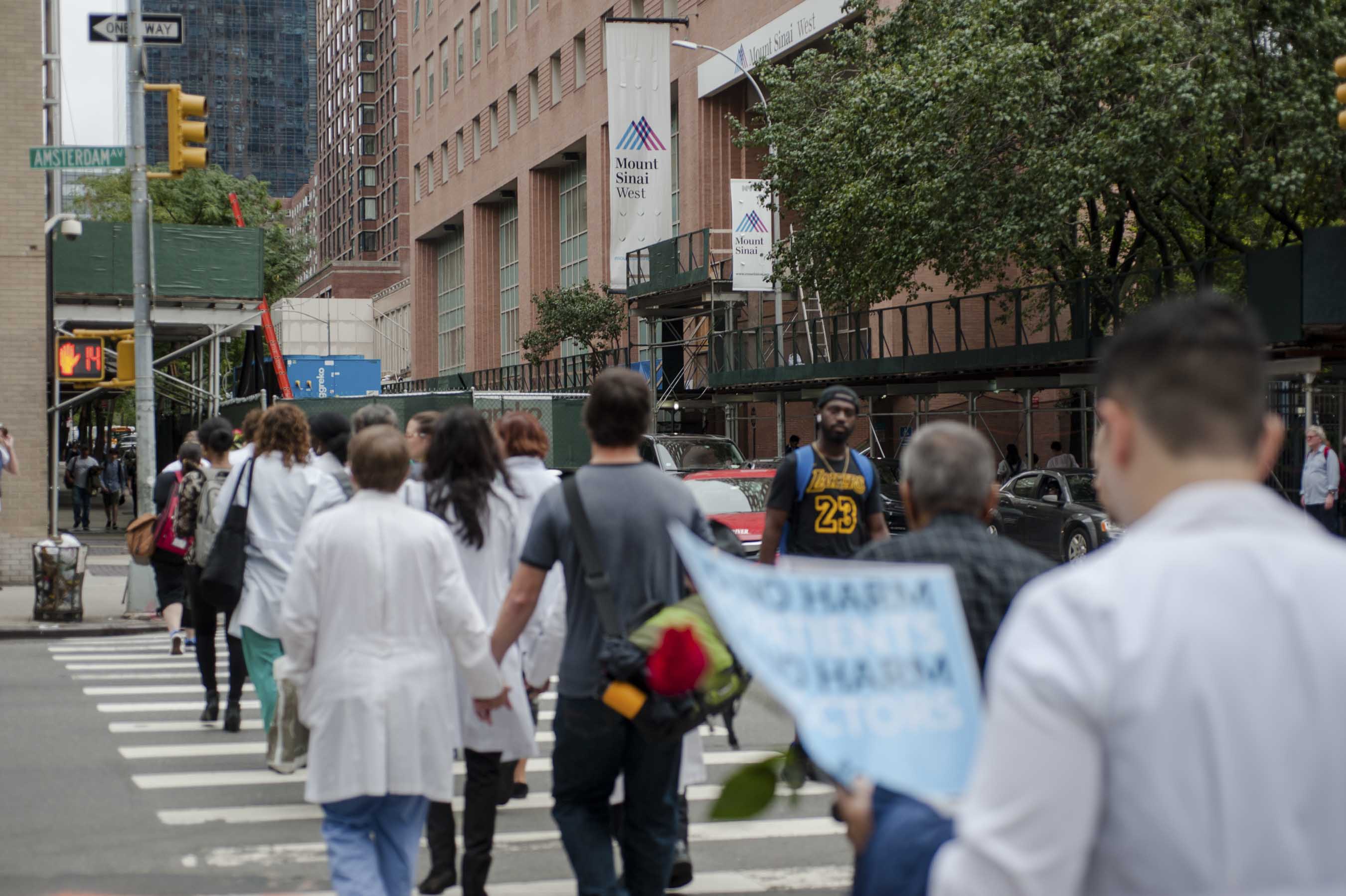
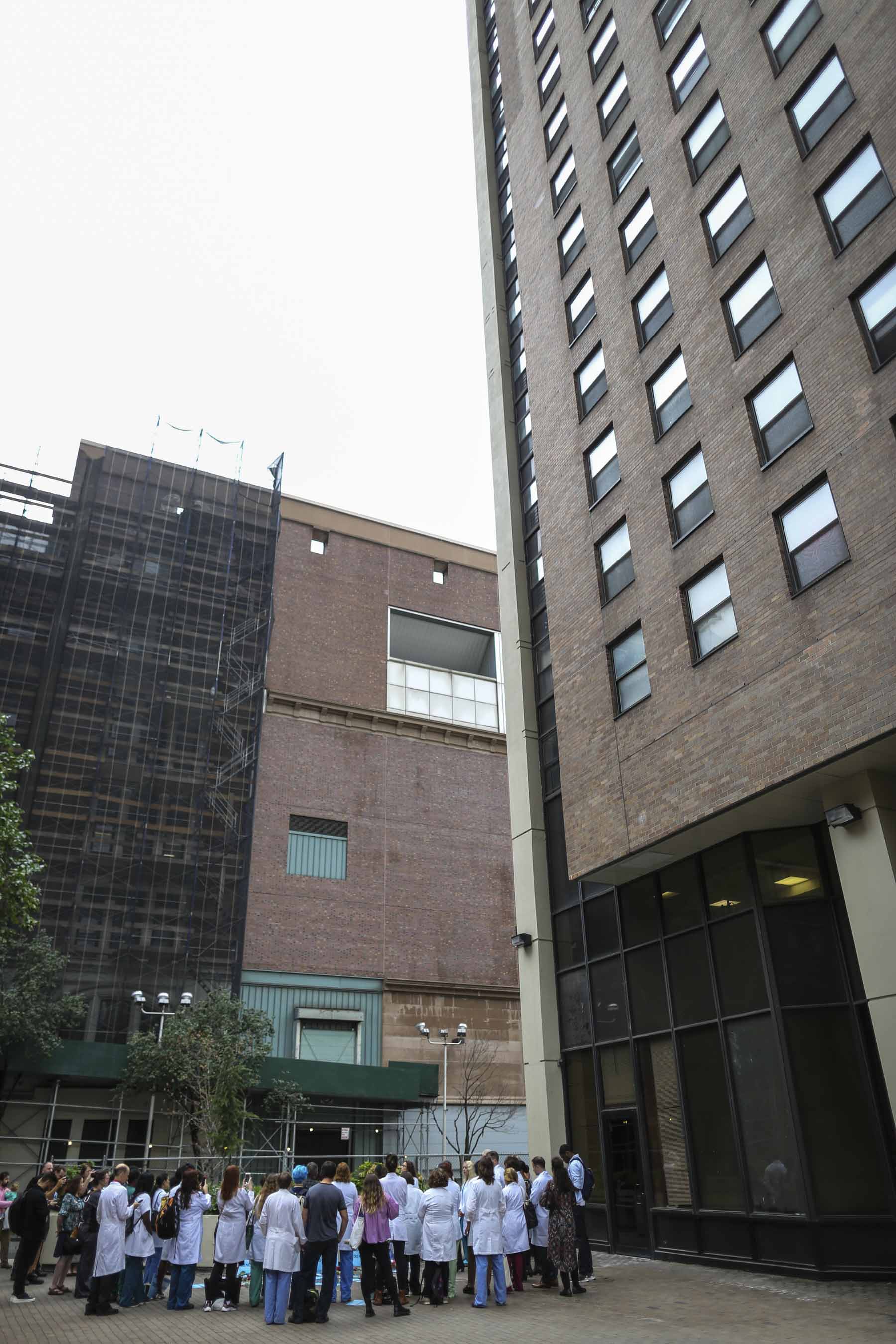
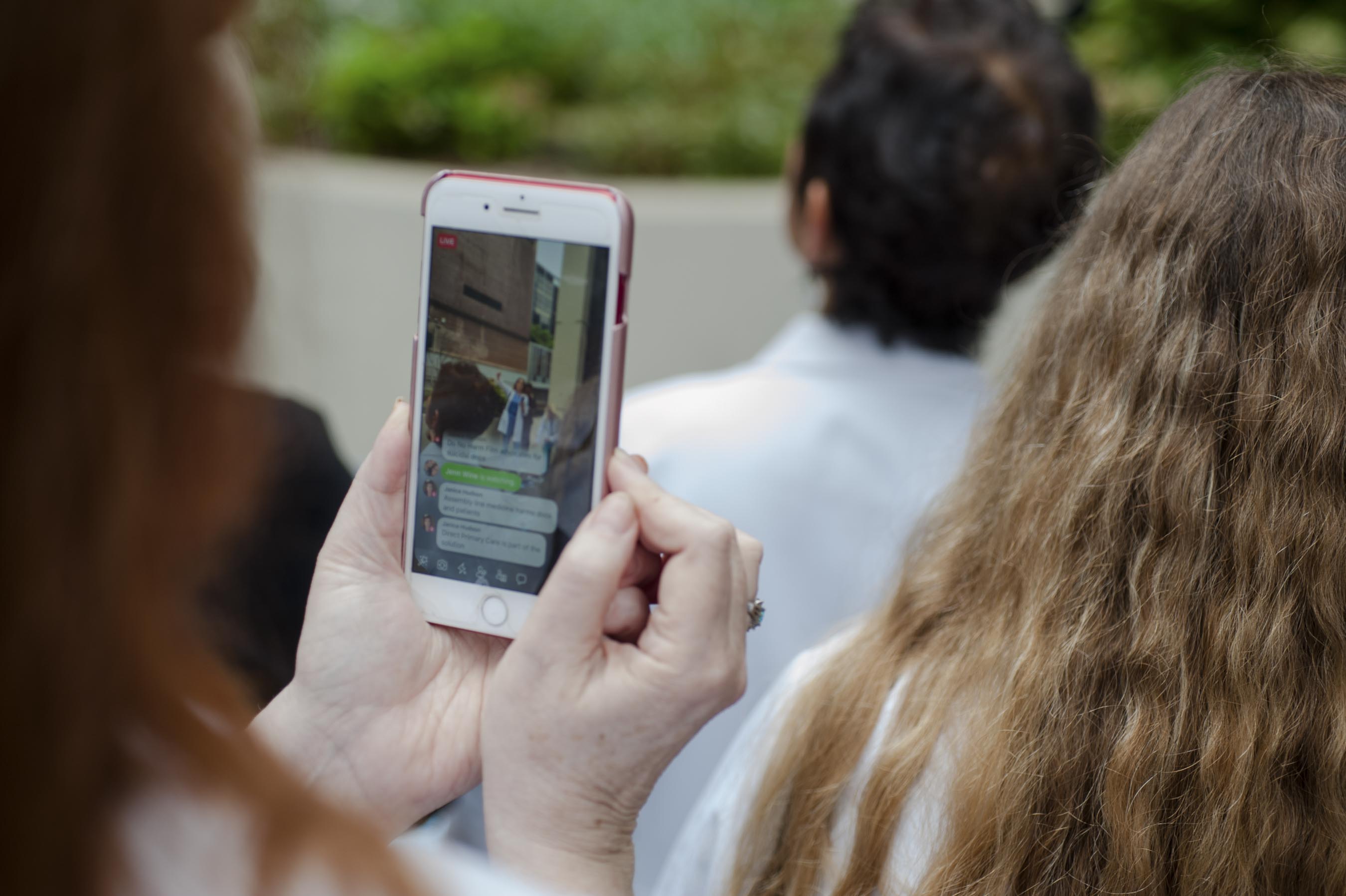
Then the third email, a big shock, came from a brave man, a chief officer of a hospital around here and he begged me for help writing, “Don’t we have a responsibility to investigate why these suicides keep happening?” Because we investigate unusual patient deaths. When a doctor is laying dead in a white coat nobody’s investigating he writes.
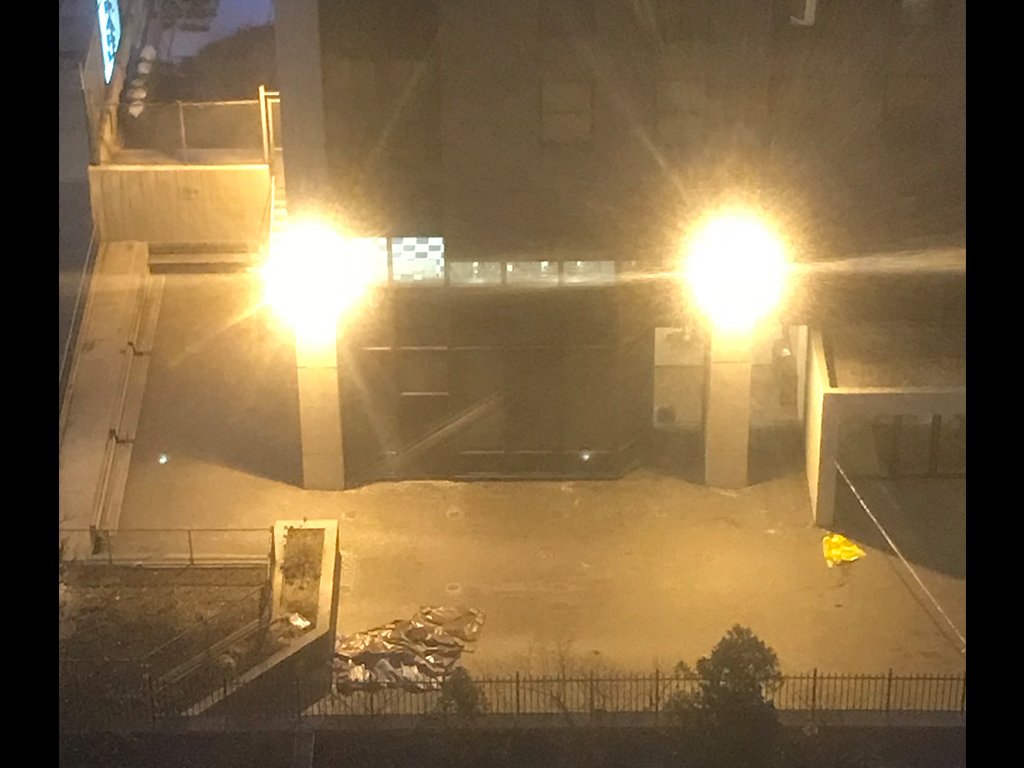
I ended up startled by the whole thing. I work in my own little clinic in Eugene, Oregon, doing housecalls as a small-town doctor. I didn’t know that I was going to be at Ground Zero in New York City dealing with this. When you get three emails within an hour begging you for help and you’re a healer on this planet you sort of feel like you have to do something.
So I literally got on a plane and came here. I went to the Watson Hotel where I rented a conference room for 10 hours for $500, a pretty good deal on the fly and I led a 10-hour funeral for this woman. I don’t even know her. I didn’t have her picture. And a candlelight vigil and then we were here again the next day so it was like a two-day funeral event.
[Big thanks to Watson Hotel for renting me a conference room for Dr. Joomun’s memorial service in January and allowing us to stage our memorial march from their lobby in September.]
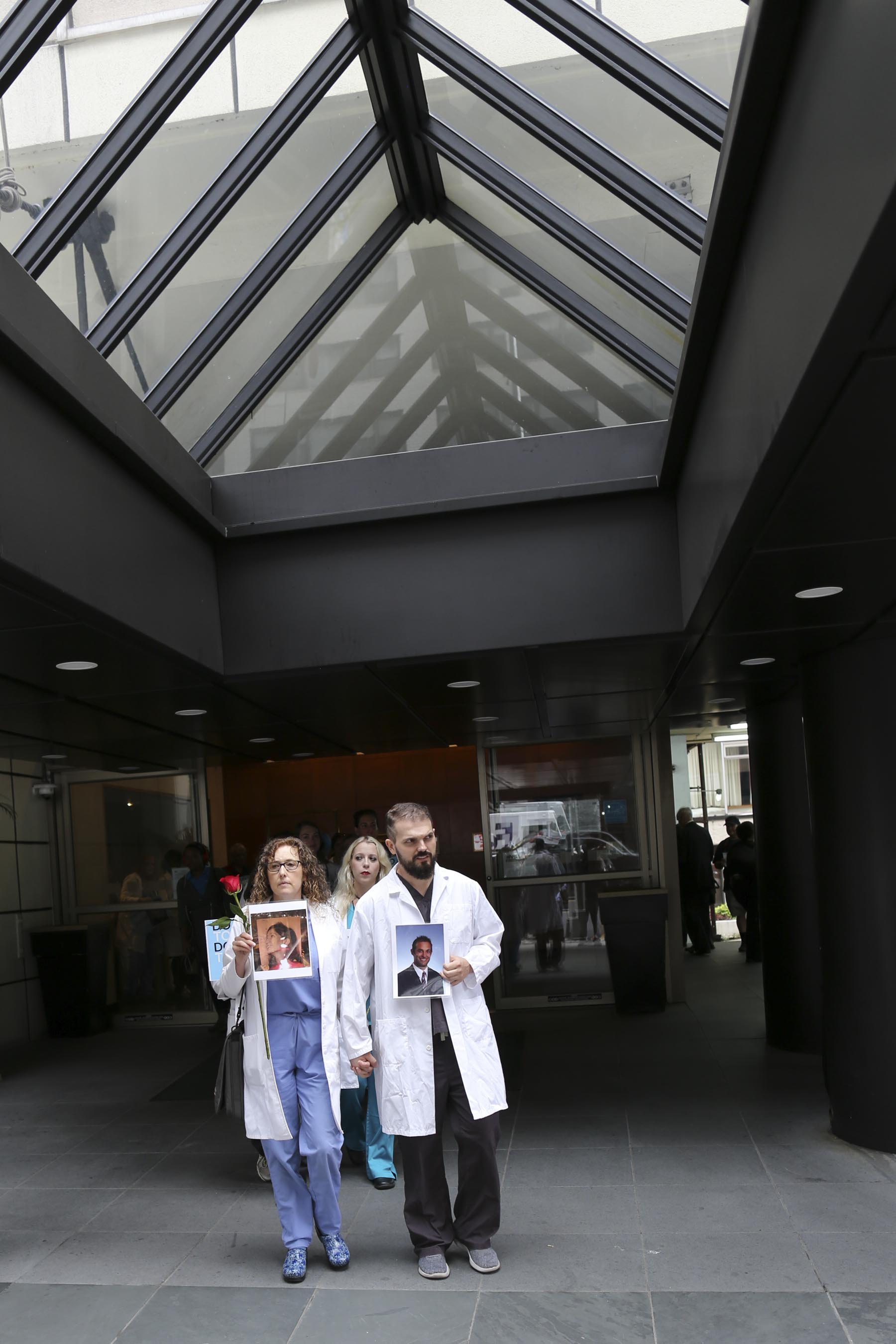
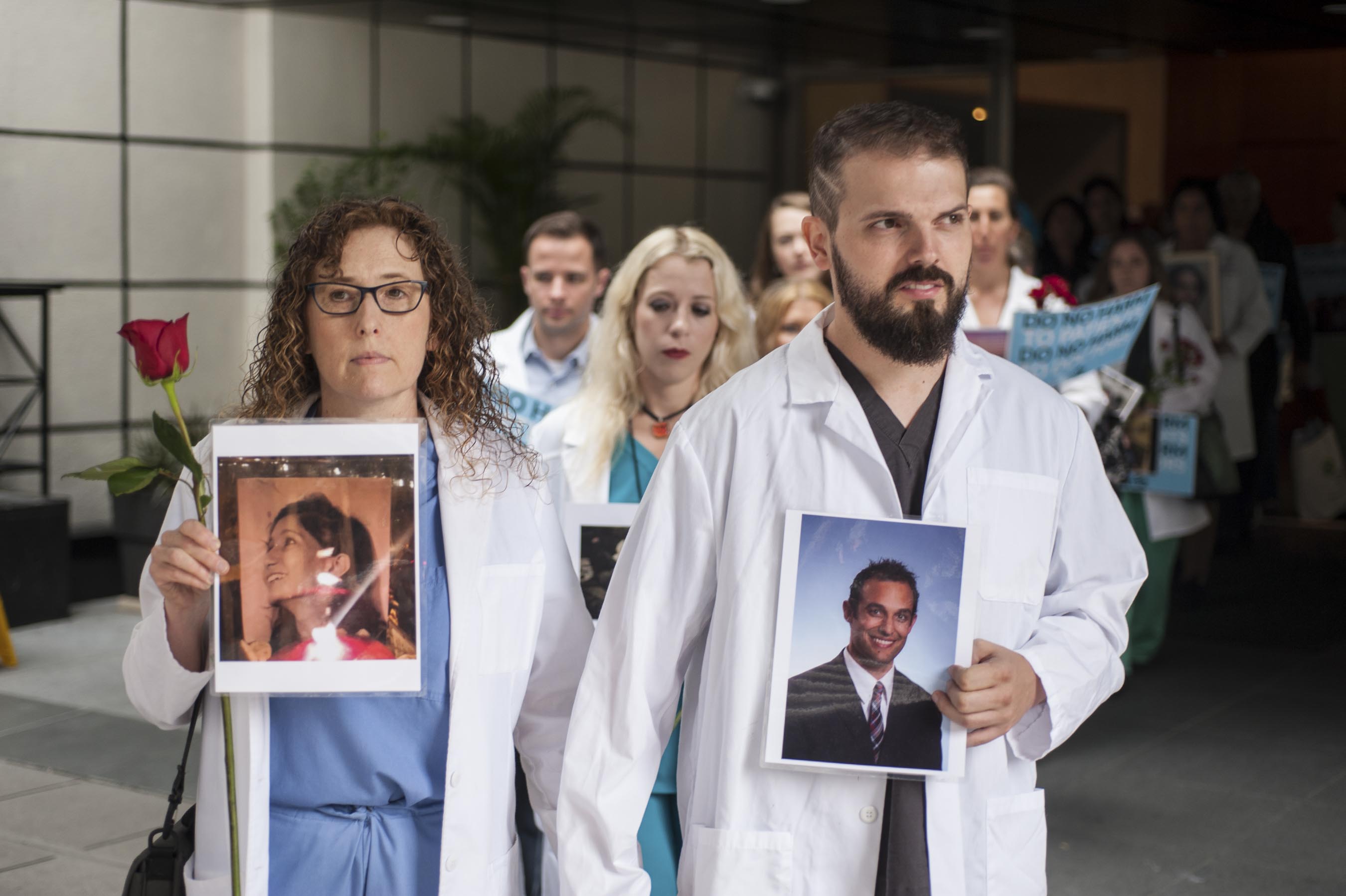
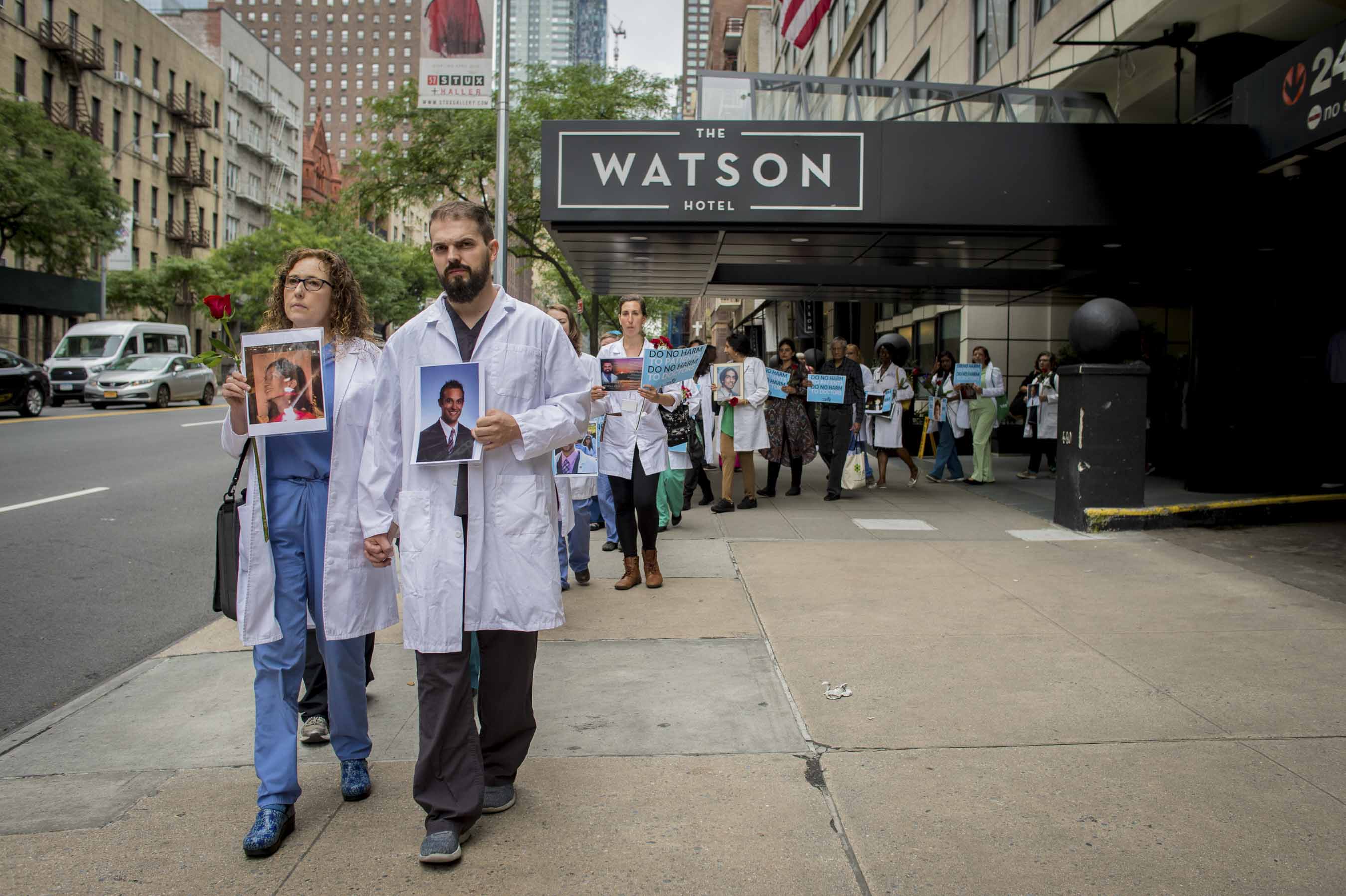
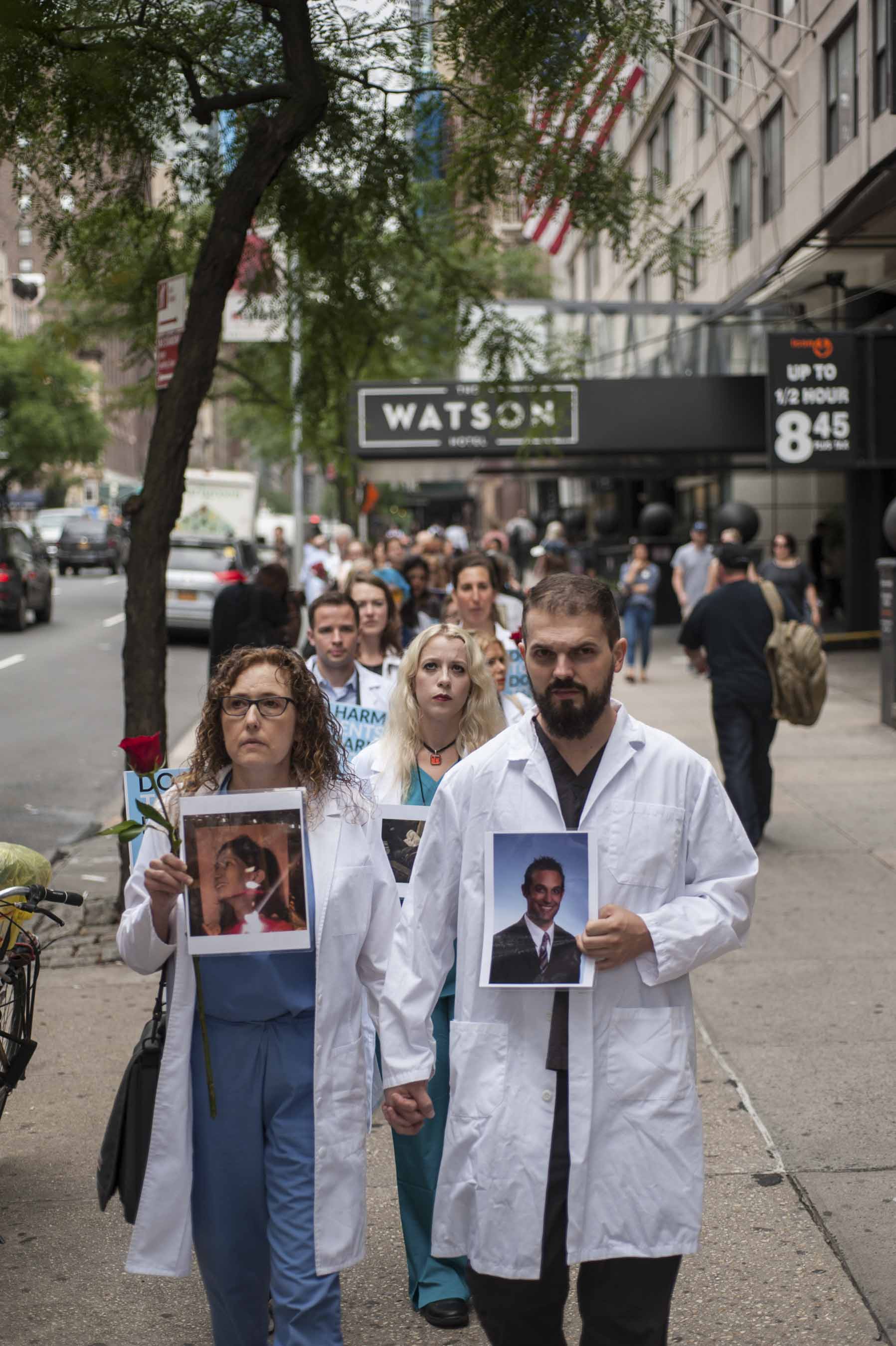
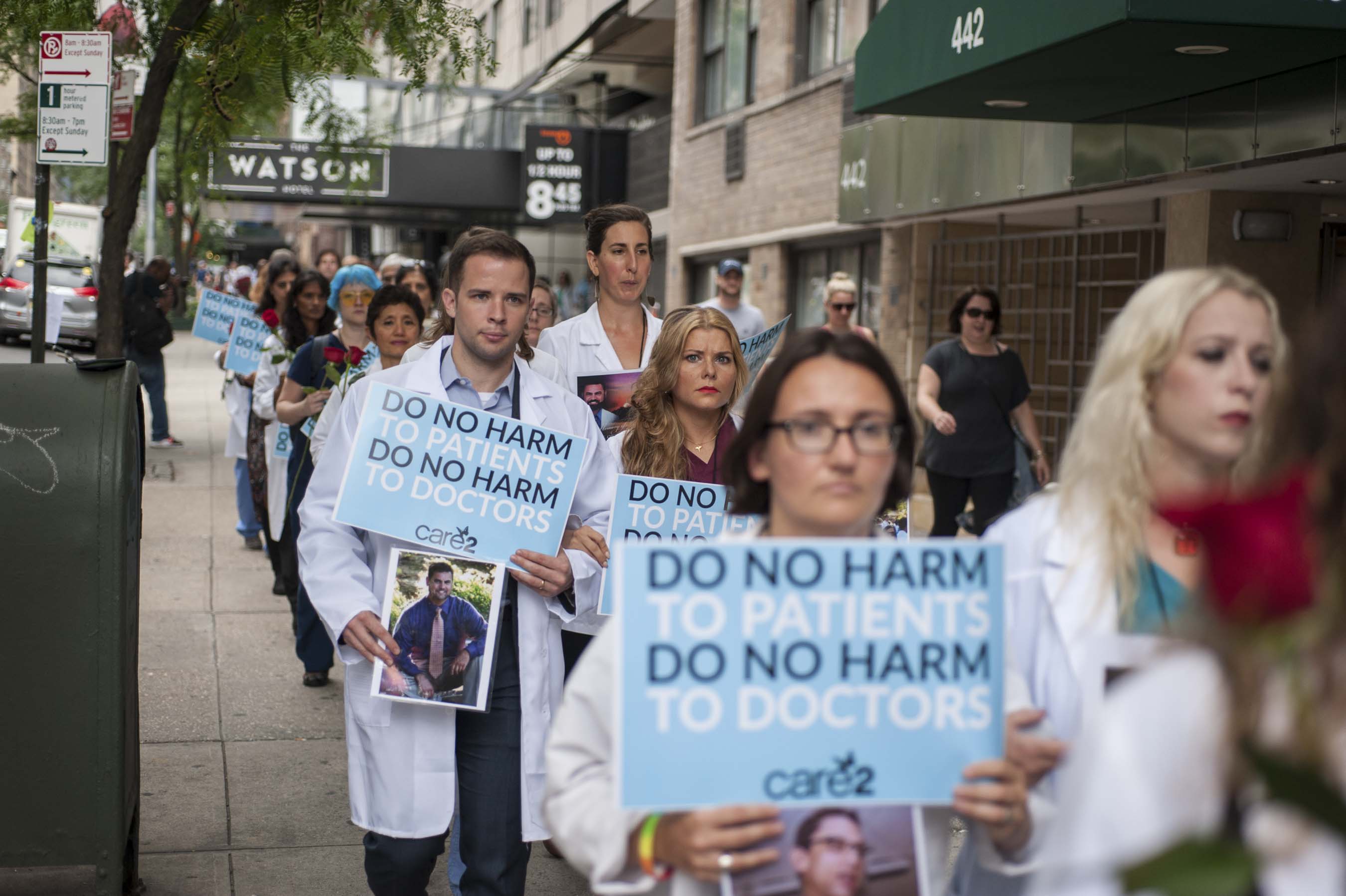
There victims are more than just the people that we see here on the ground—the doctors who have not been honored—and have in fact been shunned in their deaths.
The minute they stop generating revenue they’re a problem for the hospitals, especially if they’re surrounded in blood on the sidewalk. Nobody wants to have that outside their hospital. So the suicide is just wiped away.
So the first victim is the doctor.
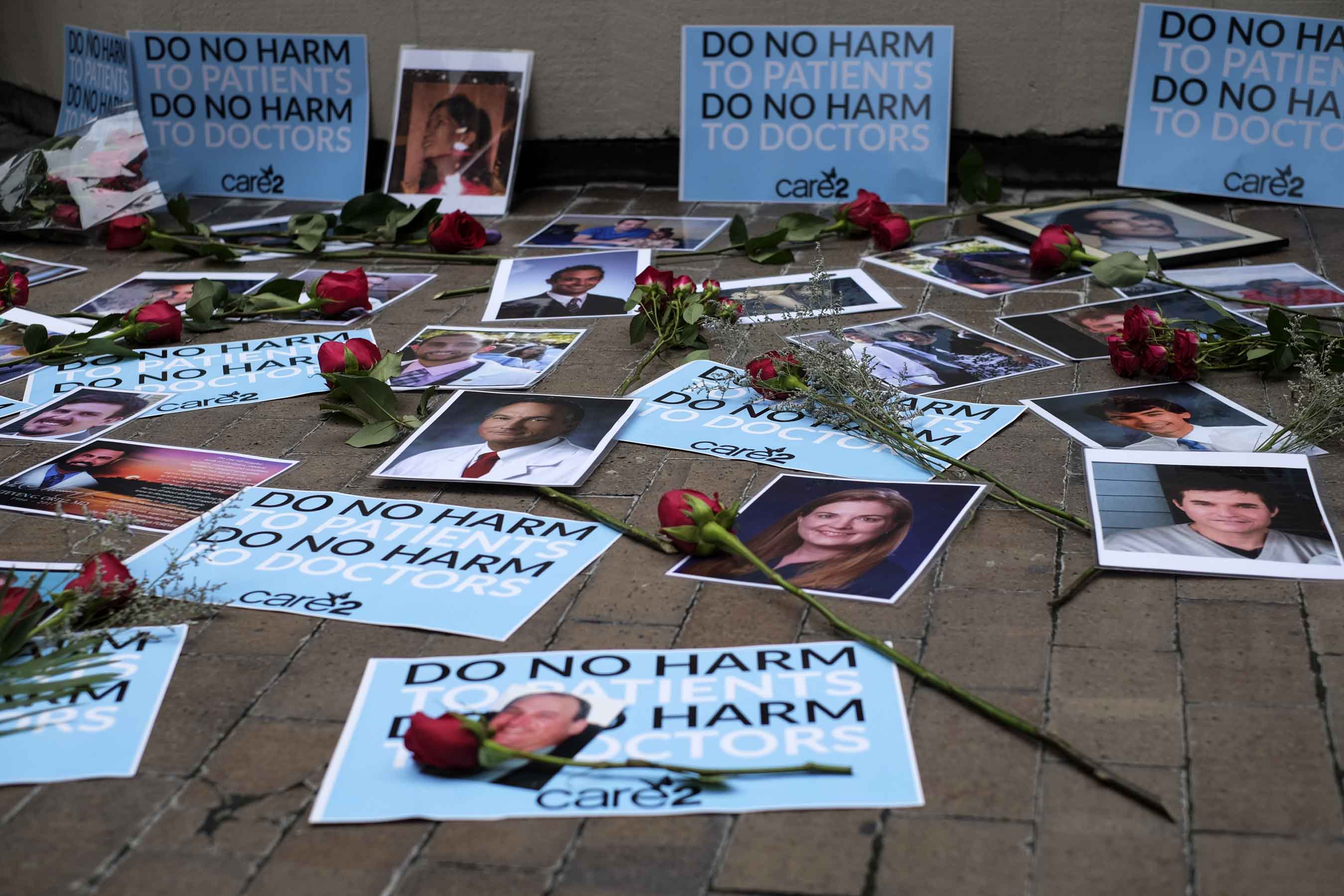
The obituaries often hide the cause of death. Families—having no idea why their loved one died by suicide—list at the bottom “In lieu of flowers, donate to the hospital and the residency program.” People don’t quite get what’s going on here because you would never want to fund the system that had something to do with potentially causing somebody you love to be in so much distress that they go up to the top of that building and step off. So that’s number one.
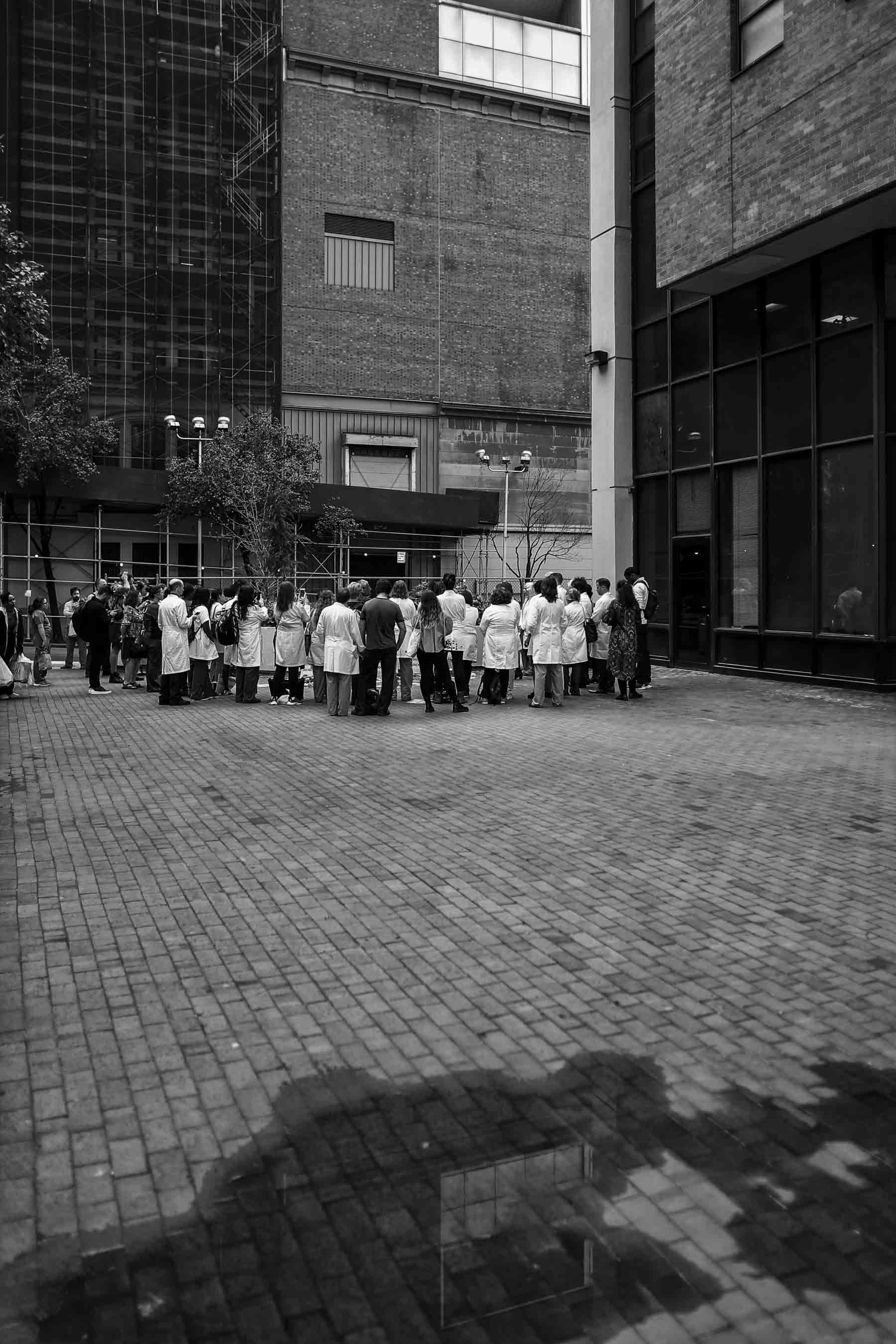
The second victims are colleagues—ALL the doctors. It’s hard to see with all the trees. In January when there were no tree leaves, physicians working in Mount Sinai Hospital had a clear view of the roof of this building. While they’re doing procedures on patients in exam rooms, they are seeing their colleague in a white coat standing on the edge there right there.
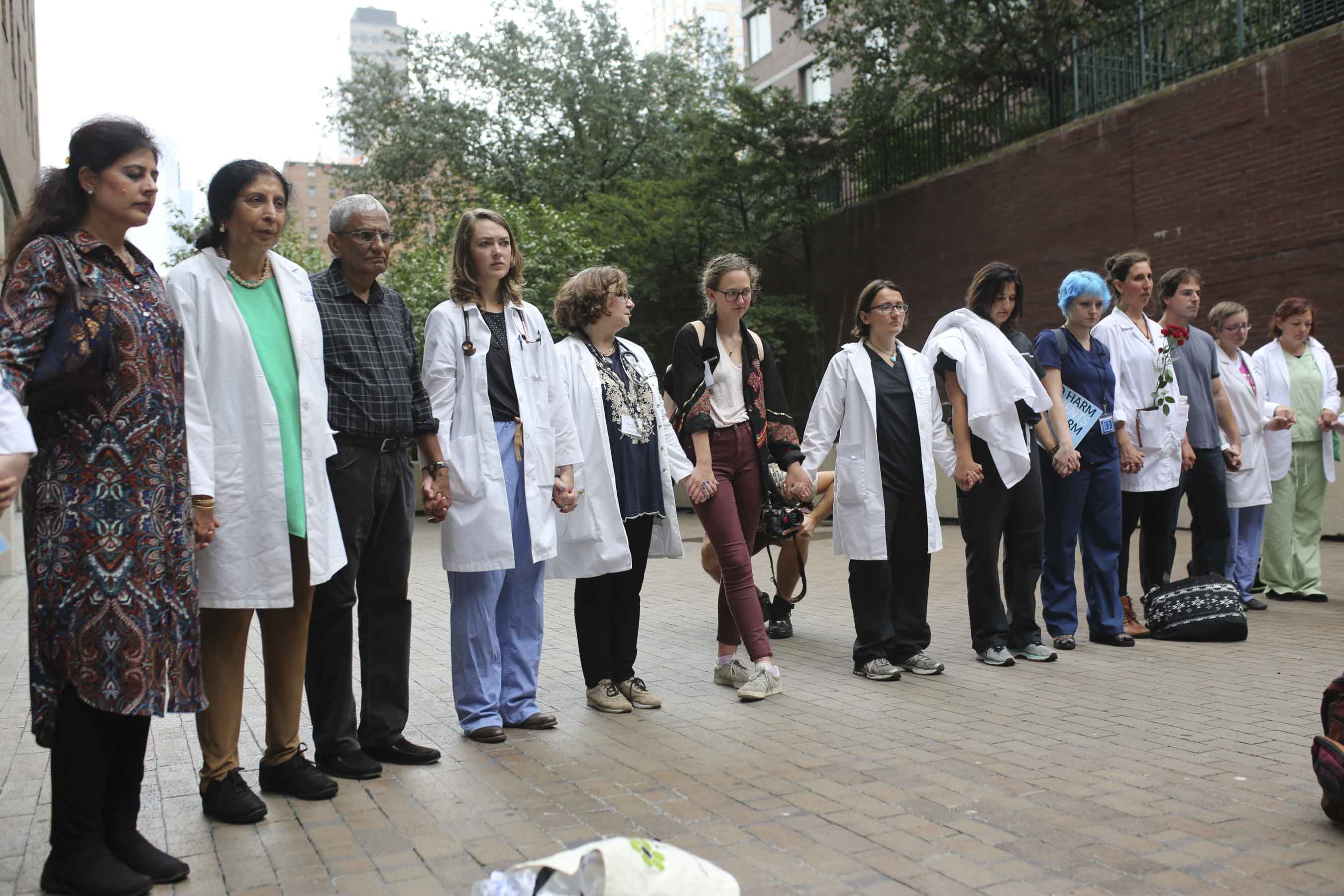
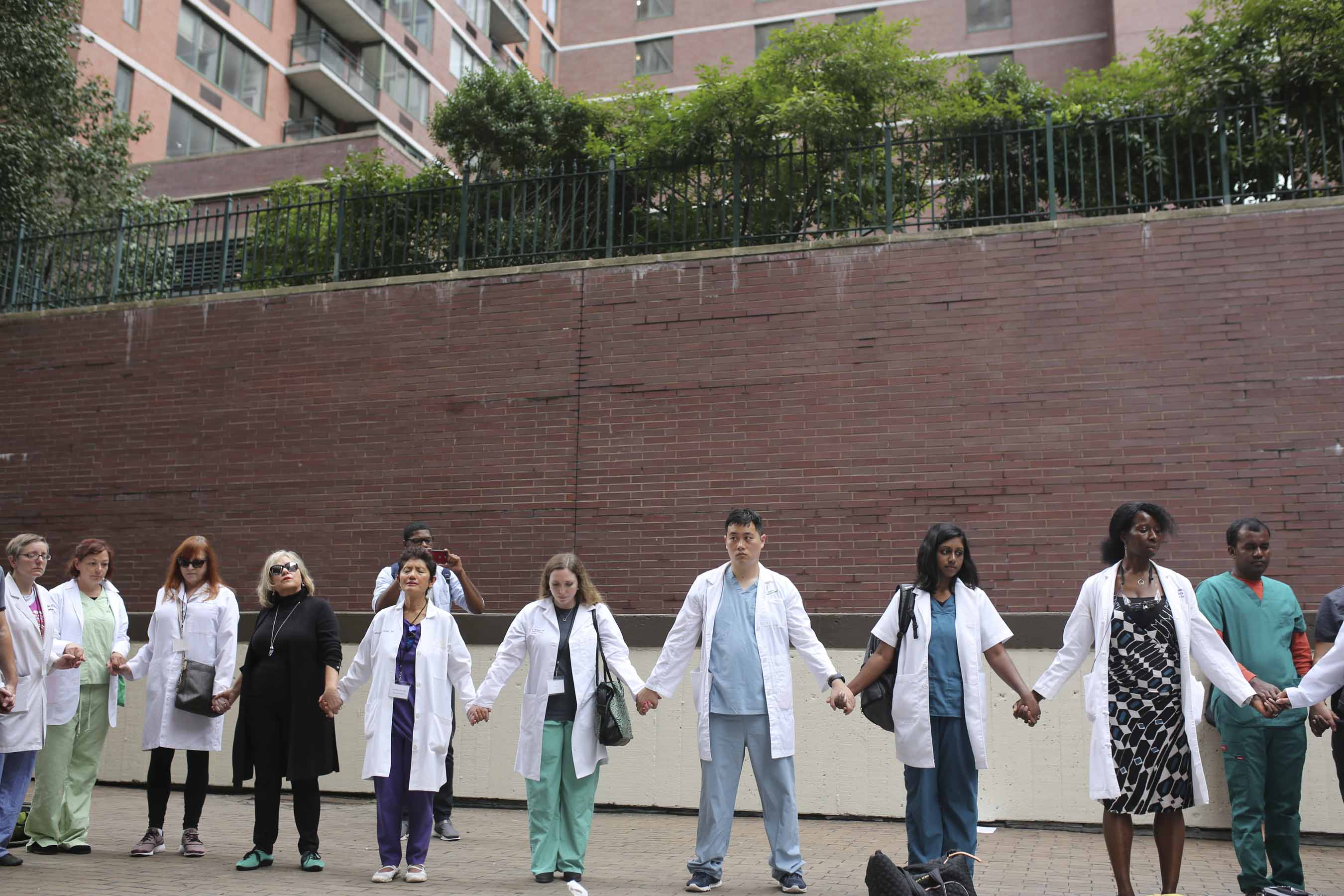
They’re seeing this whole thing in real time to the point where I’m getting phone calls beyond the three emails. I started getting calls from people who just witnessed their friend jump off the building—and they have to keeping working. They just watched their friend die—and not only that, some of them like this one woman said that during a procedure she not only witnessed this woman die (and was hoping even praying it was not her friend).
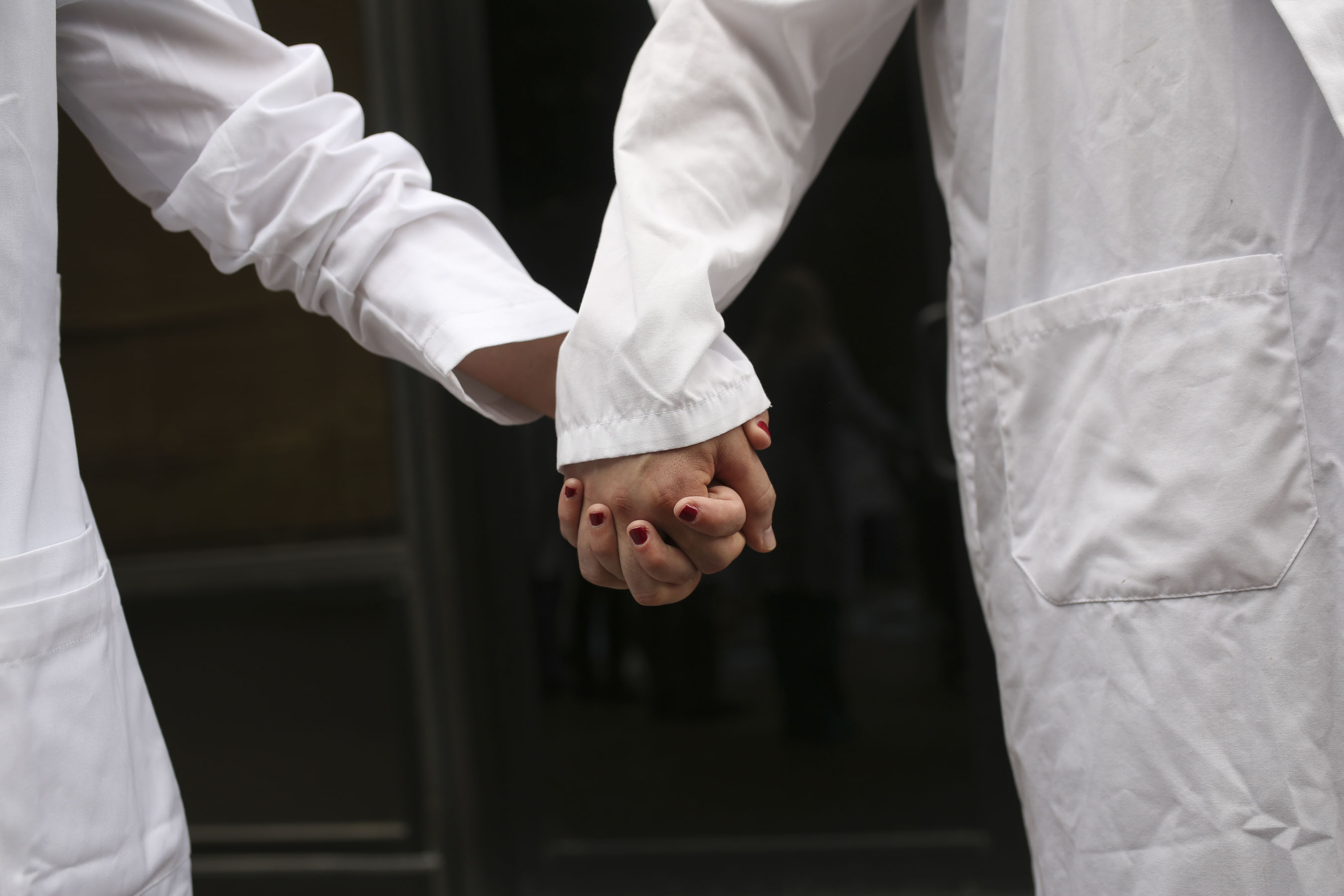
Everyone knows it’s a doctor dying. She started having flashbacks to the three or four other physicians that she lost by suicide in the last few years who jumped off other buildings. So these are people who have not been able to grieve and are having flashbacks while trying to process this in real time—and trying to take care of patients!
If anyone thinks doctors aren’t resilient, go check yourself. Nobody can watch these deaths all day long and see their friends dying by suicide and keep working and not go home early—plus they’re often not allowed to attend the funeral. So the second victims are other doctors—their colleagues. This building houses 450+ doctors and there’s hundreds of doctors over there. And I don’t think any of them have been allowed to really grieve properly, which is more than just two hours sitting in a room or calling a 1-800 number. Grief is a process, okay? [When would residents working 80+ hours weekly have time to process and grieve all these suicides and deal their own PTSD from being surrounded by death and suffering all day?]
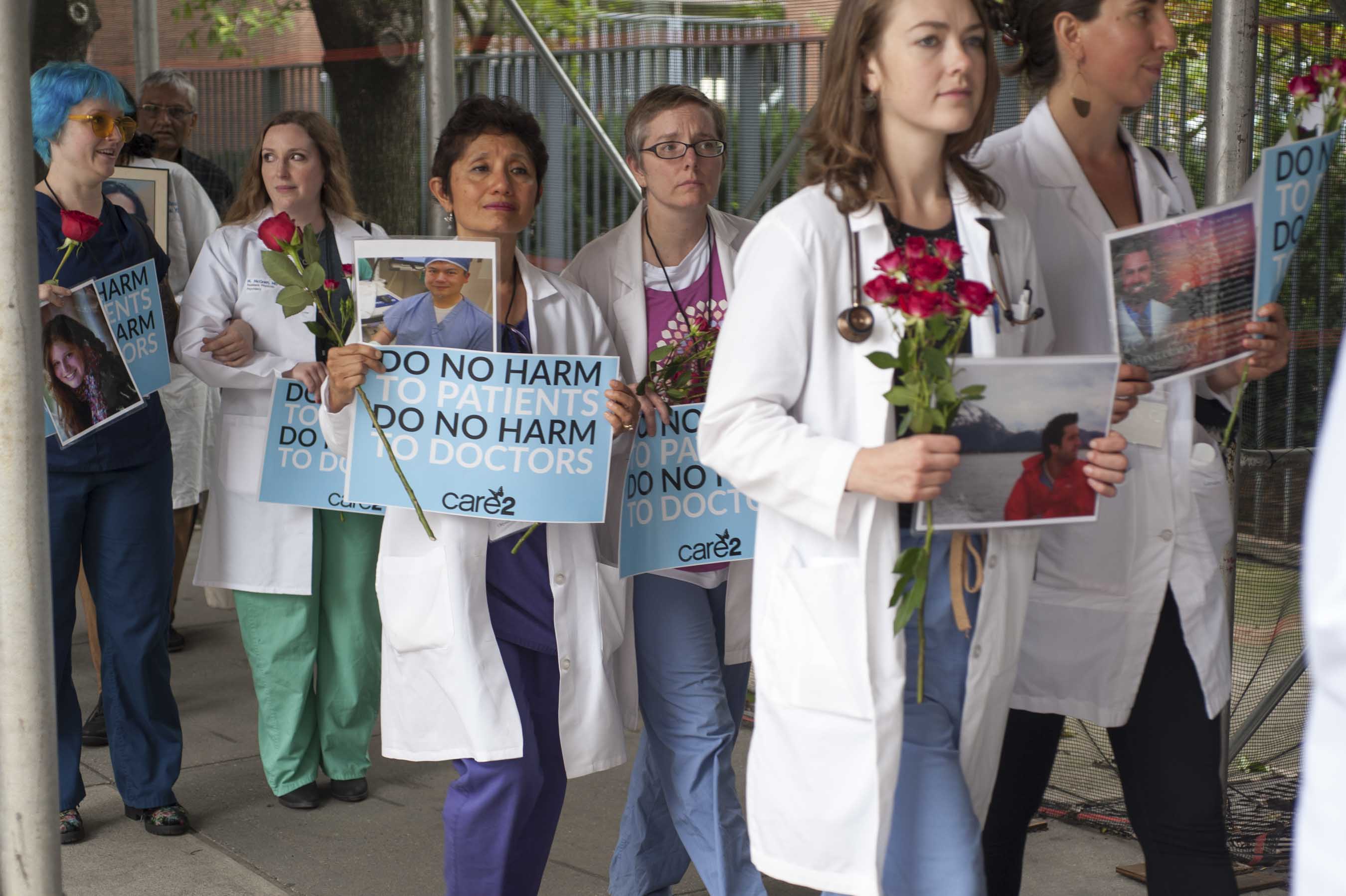
The third victims which we never hear about are the patients who are wondering, “What happened to my doctor? She just did my procedure yesterday.” Everyone’s clueless. Had I not shown up here to lead this eulogy everyone would just say, “I guess she went on vacation or changed jobs.”
As scientists, I can’t believe we’re not taking this seriously, head-on. [We’ve known about the high rates of suicide among doctors since 1858 in England when it was first reported, yet 160 years later the medical profession has still not addressed the root causes].
So the final thing I want to say is people are scared. Residents have told me to shield their identity because they are scared they will get fired for sharing what is going on here.

Nobody wants to lose their career and so everyone’s running scared in silence back to their apartments.
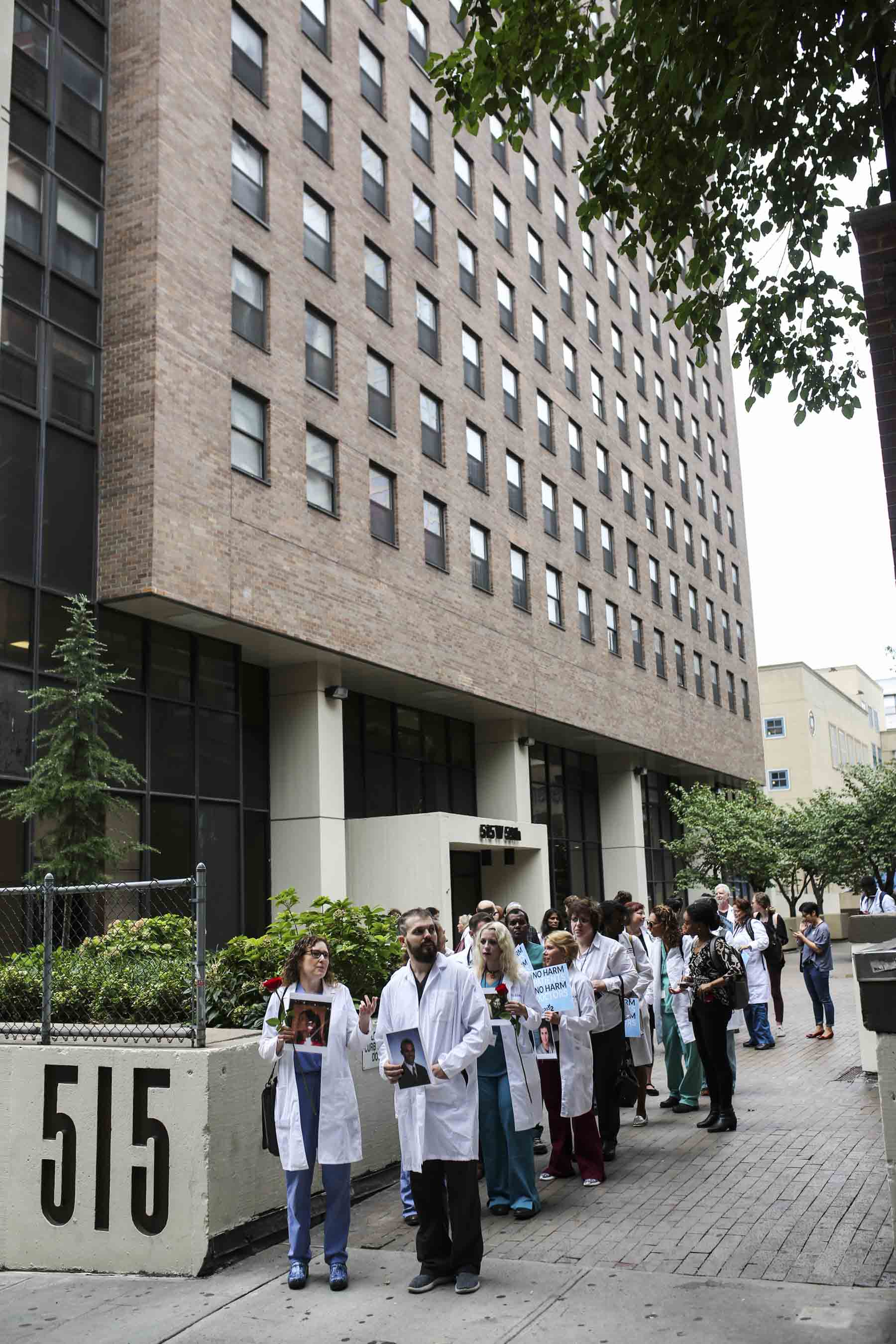
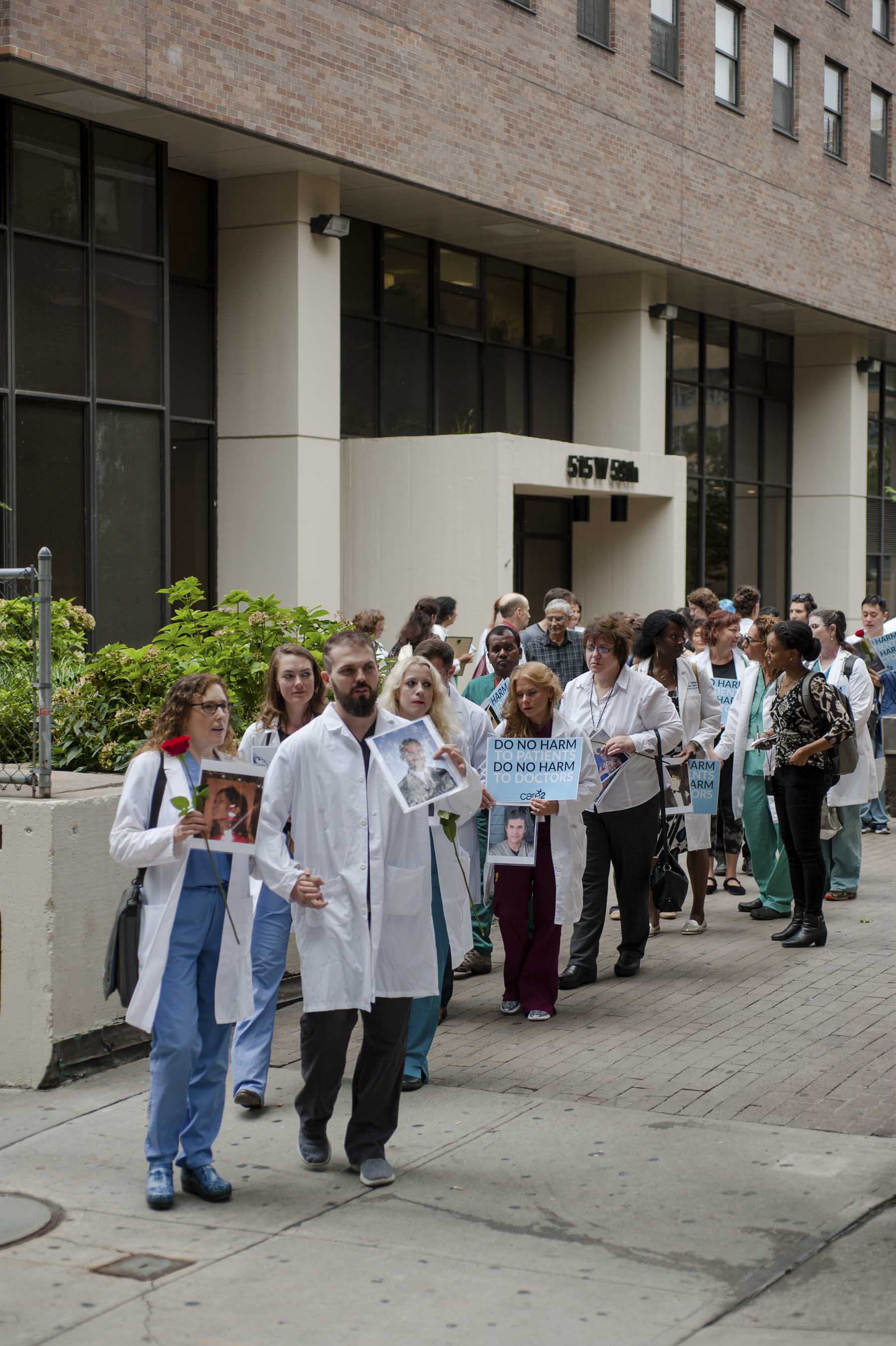
Should this not be investigated?
Across the street there’s a place called John Jay College of Criminal Justice. We need your help over here because there has been stuff happening—suicides that have not been investigated. If the officials won’t investigate it maybe each of us can. I’ve collected more than 1,077 doctor suicides that I’ve personally investigated as a hobby. See I gave up knitting and doing mural artwork because all of a sudden all these doctor suicides kept coming in. Nobody else seemed interested in investigating it. So I’m like, “Well, I guess I’ll do it.”
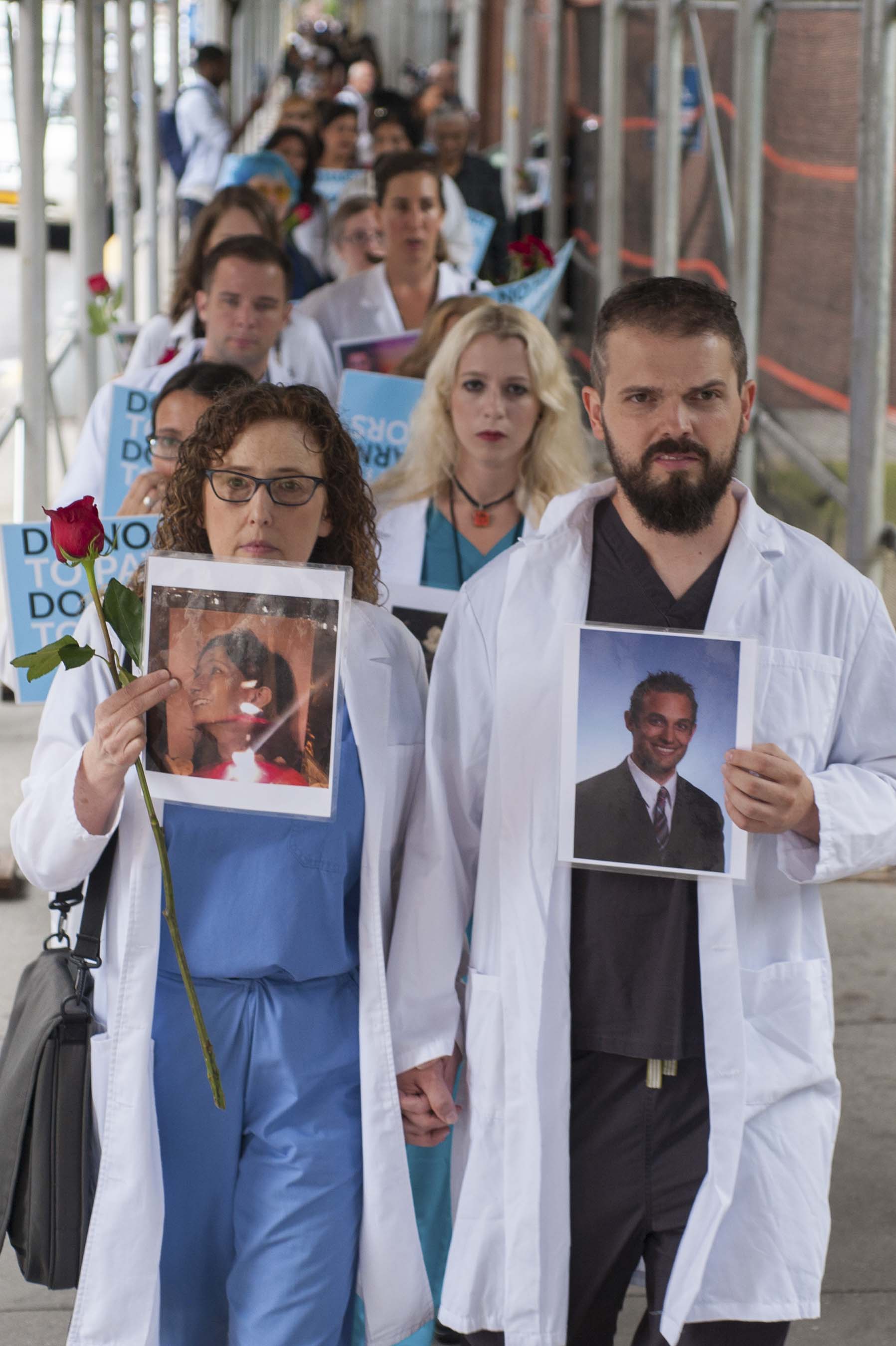
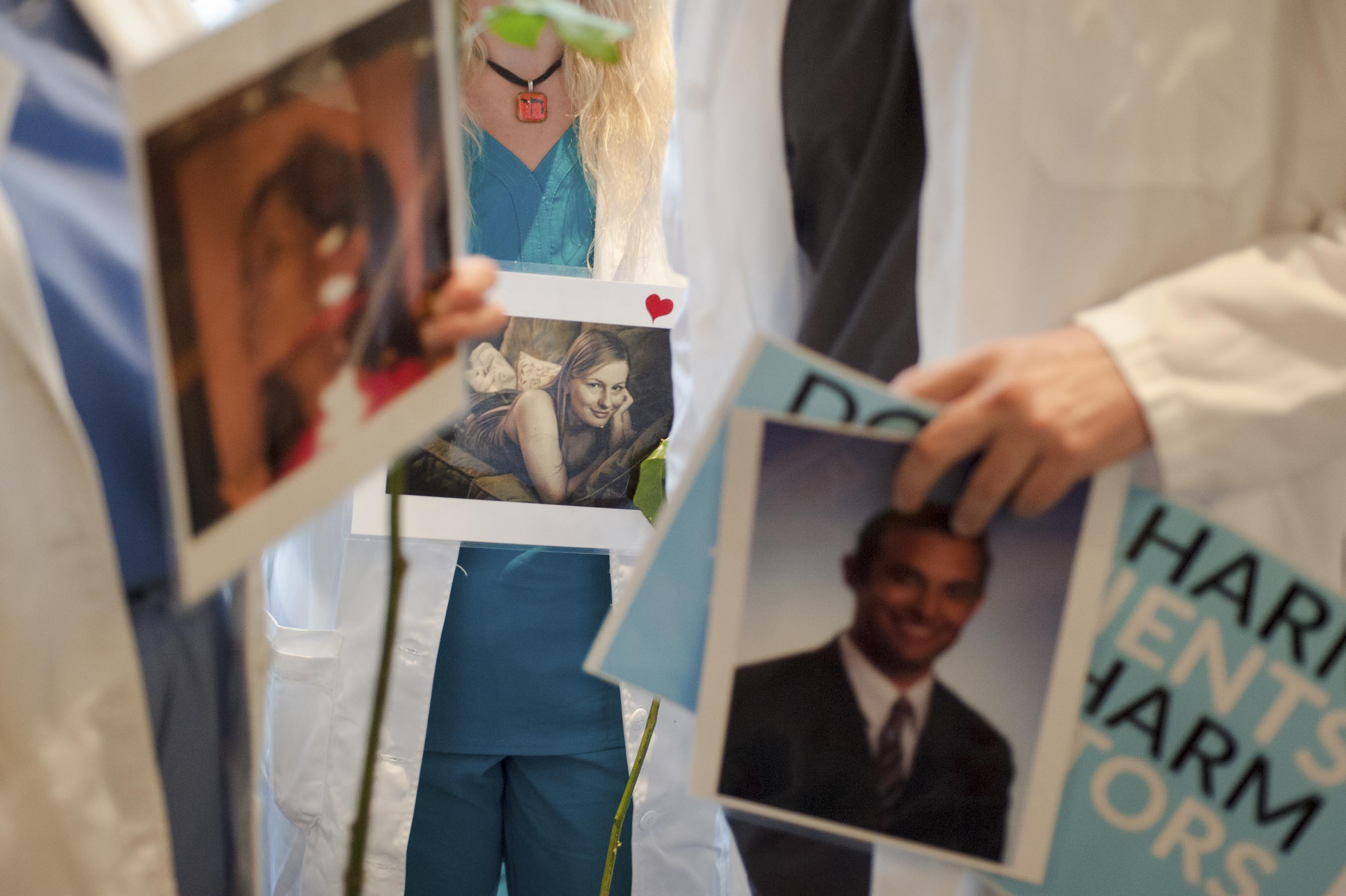
So now I have a long list. I understand deeply what’s going on with these people; what led to many of their suicides. But there’s a lack of understand among other doctors about what’s really going on. We still get stuck in status. We don’t really understand the undercurrent of toxicity that we’ve allowed to run wild in our hospital systems.
[Walls in my house covered with photos of suicided doctors]
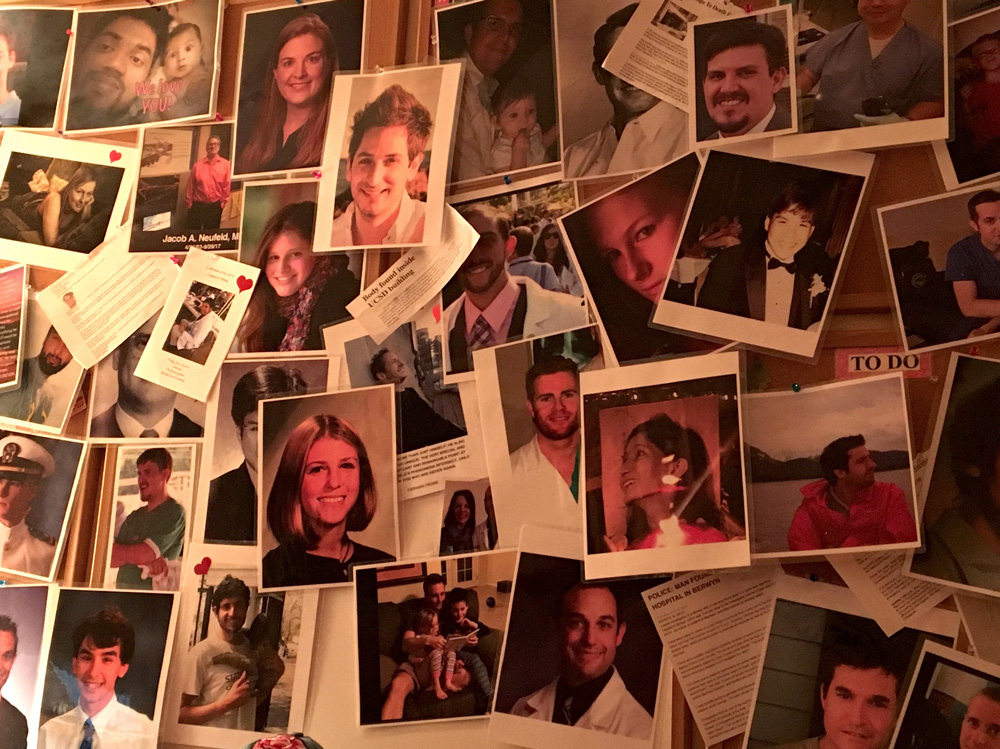
We have to take this on as medical professionals using science. Take an interest in the fact that we have lost amazing people here. This is just my personal experience that led me here to lead a eulogy for a woman I don’t even know, but I feel like I was called by God and the Great Spirit to do it. So I really want to hear from other people who have either been suicidal as physicians or medical students or lost somebody to suicide.
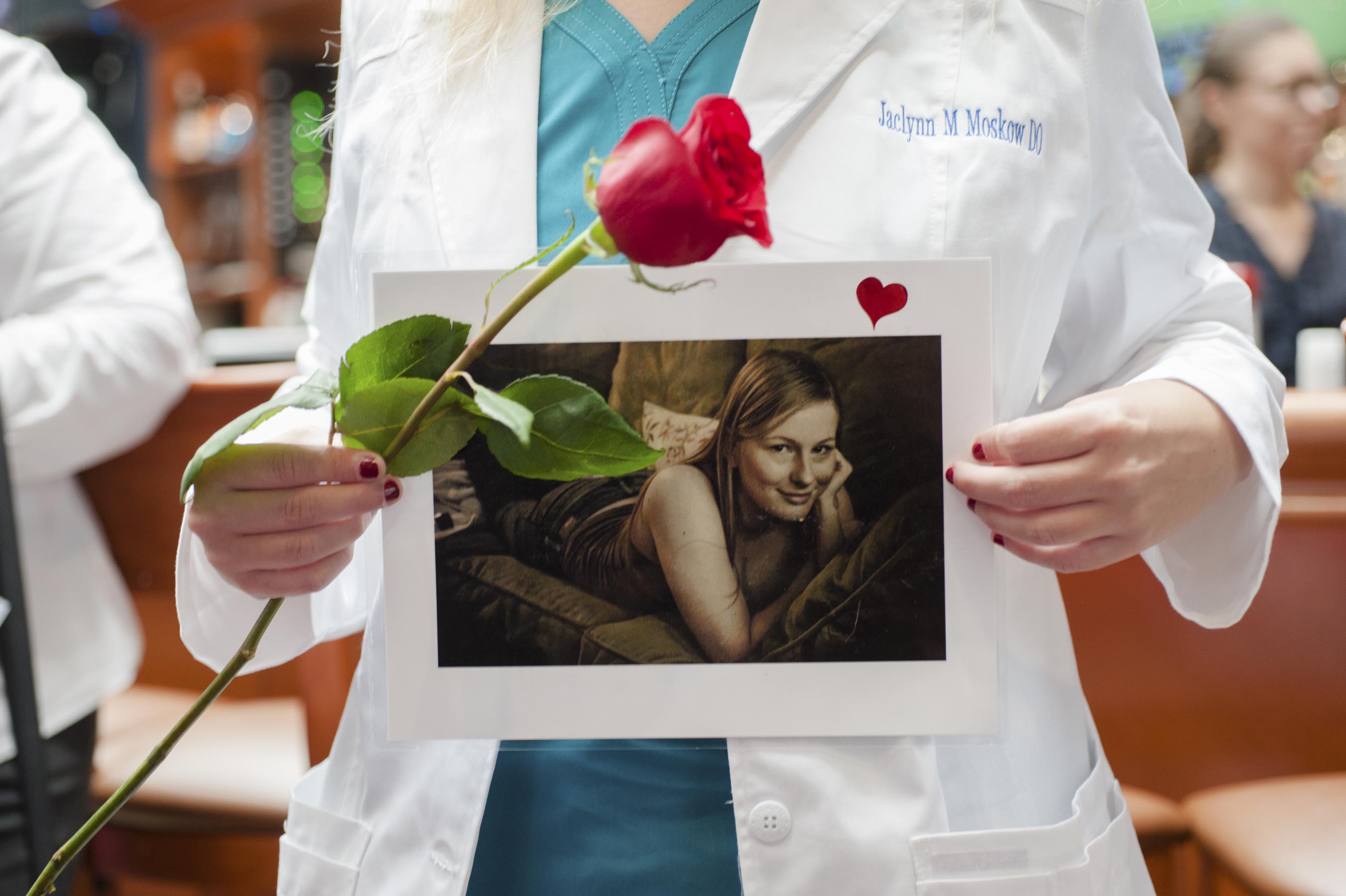
Dr. Jaclynn Moskow: I’m here because I came very close to being here [on the ground]. These are our brothers and sisters in healthcare and we have a responsibility to investigate their deaths and to take this on as a problem. This is a symptom of a bigger problem. We have a very sick healthcare system and as a result our healers at the top of it are very, very sick. And those are my thoughts.
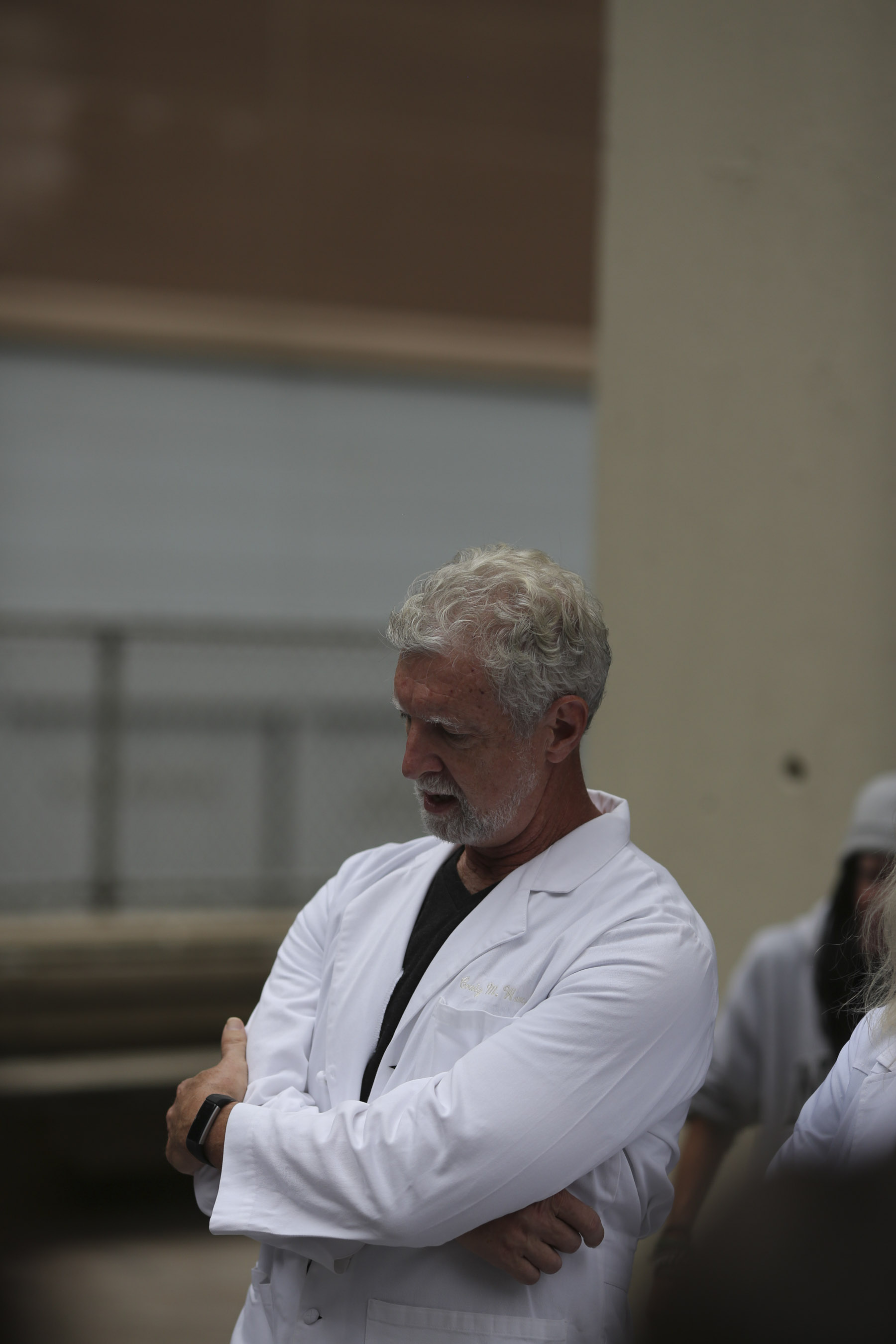
Dr. John Danyi: I attempted to suicide and was fortunately unsuccessful about a year ago. And I was shocked at how little support there was and how invested the medical community was in avoiding talking about it or dealing with it. And it’s not like we don’t have the language to use for disease. And this is a symptom of the disease to medical culture. And until we get people interested in talking about it as such, I don’t think we’re ever going to make a dent in the obvious need that’s at our feet. Fortunately people like Pamela and Robyn are trying to get the word out.
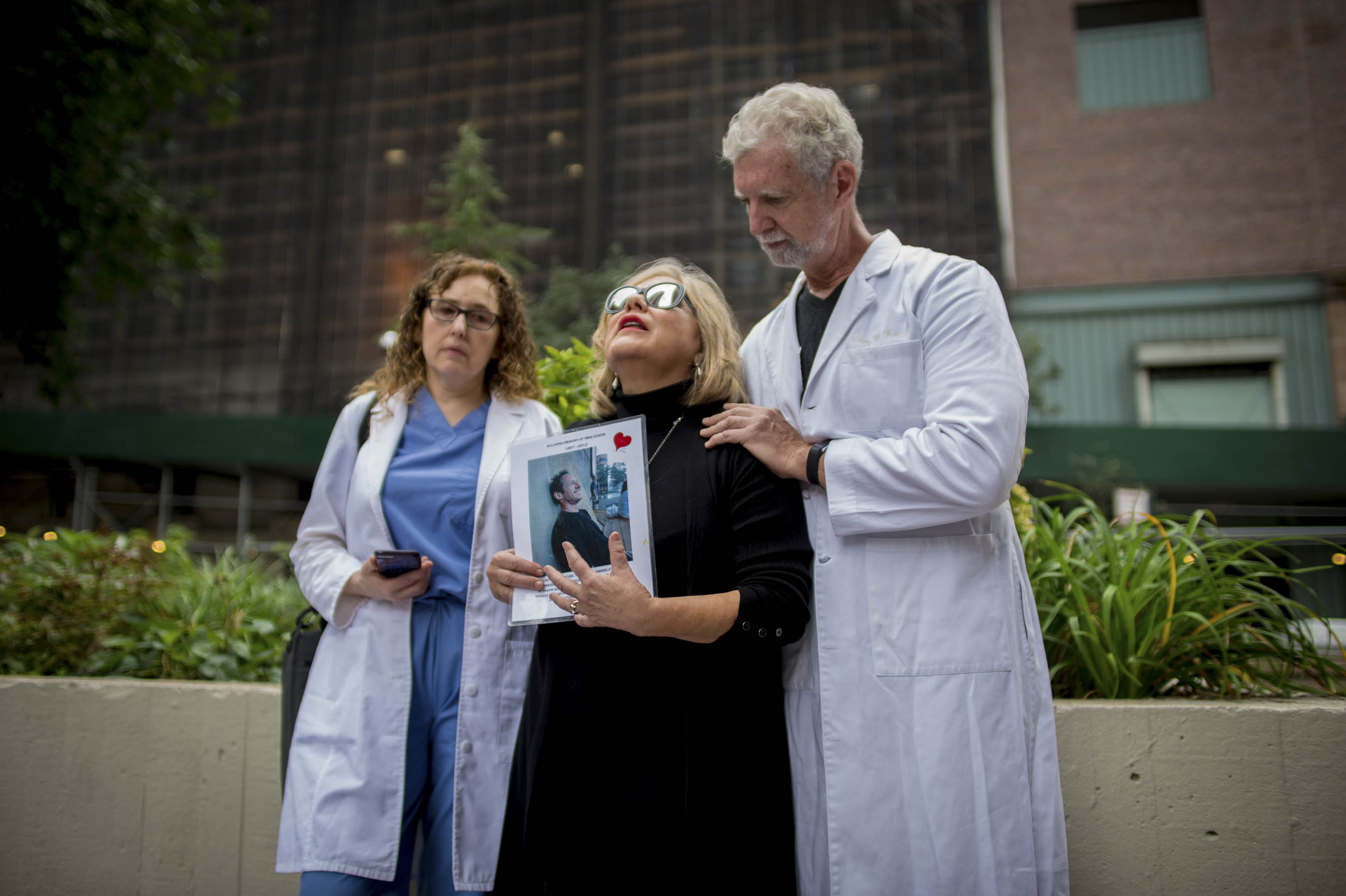
Many more residents and physicians shared their suicide attempts. I chose not to publish their accounts without permission. Please know that suicide is an epidemic among medical professionals. Start the conversation about doctor suicide at your medical institution. Please contact Robyn Symon to screen Do No Harm—the film that exposes causes and reveals solutions to the doctor suicide crisis.
As we walked away from the memorial we experienced an unexpected surprise.
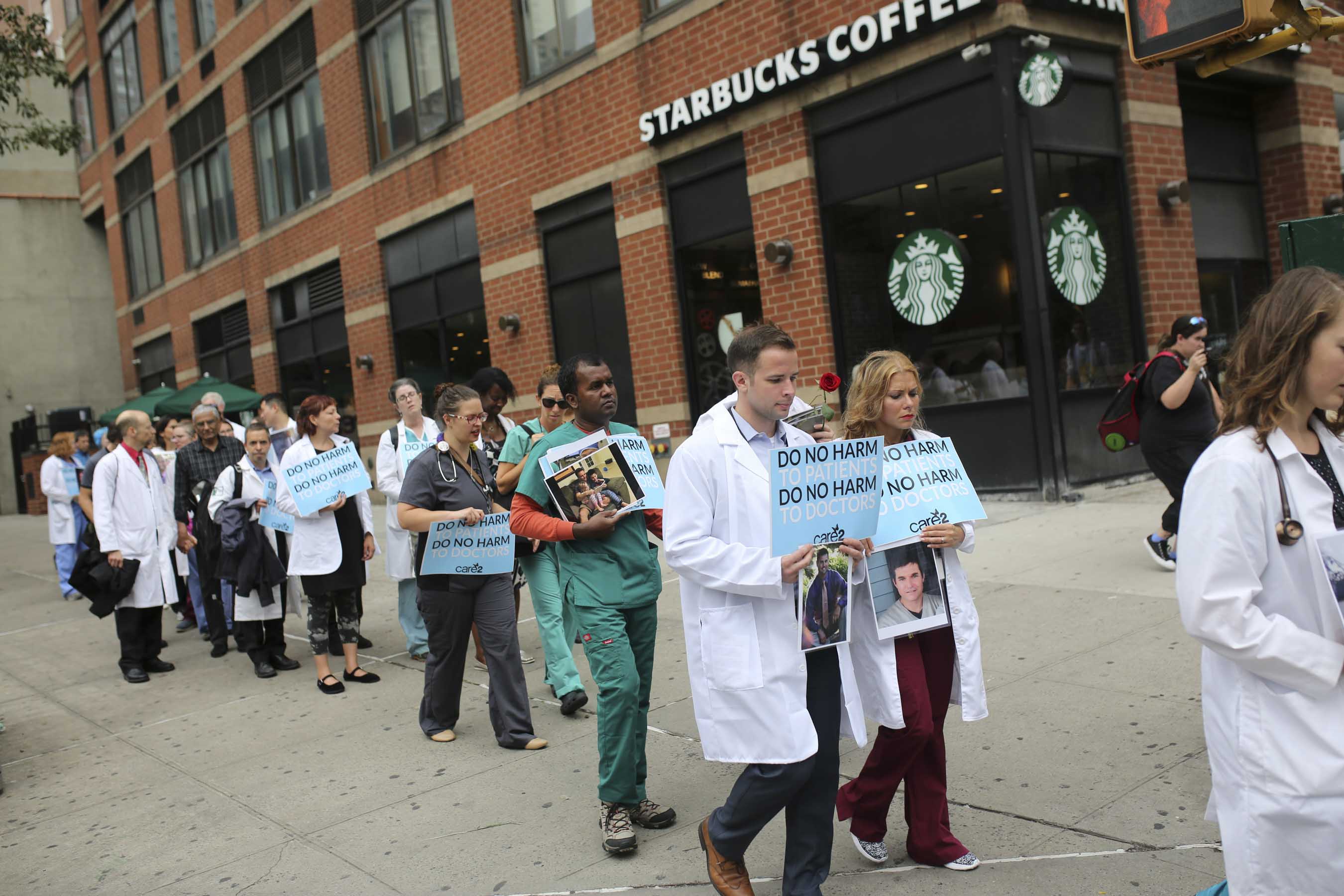
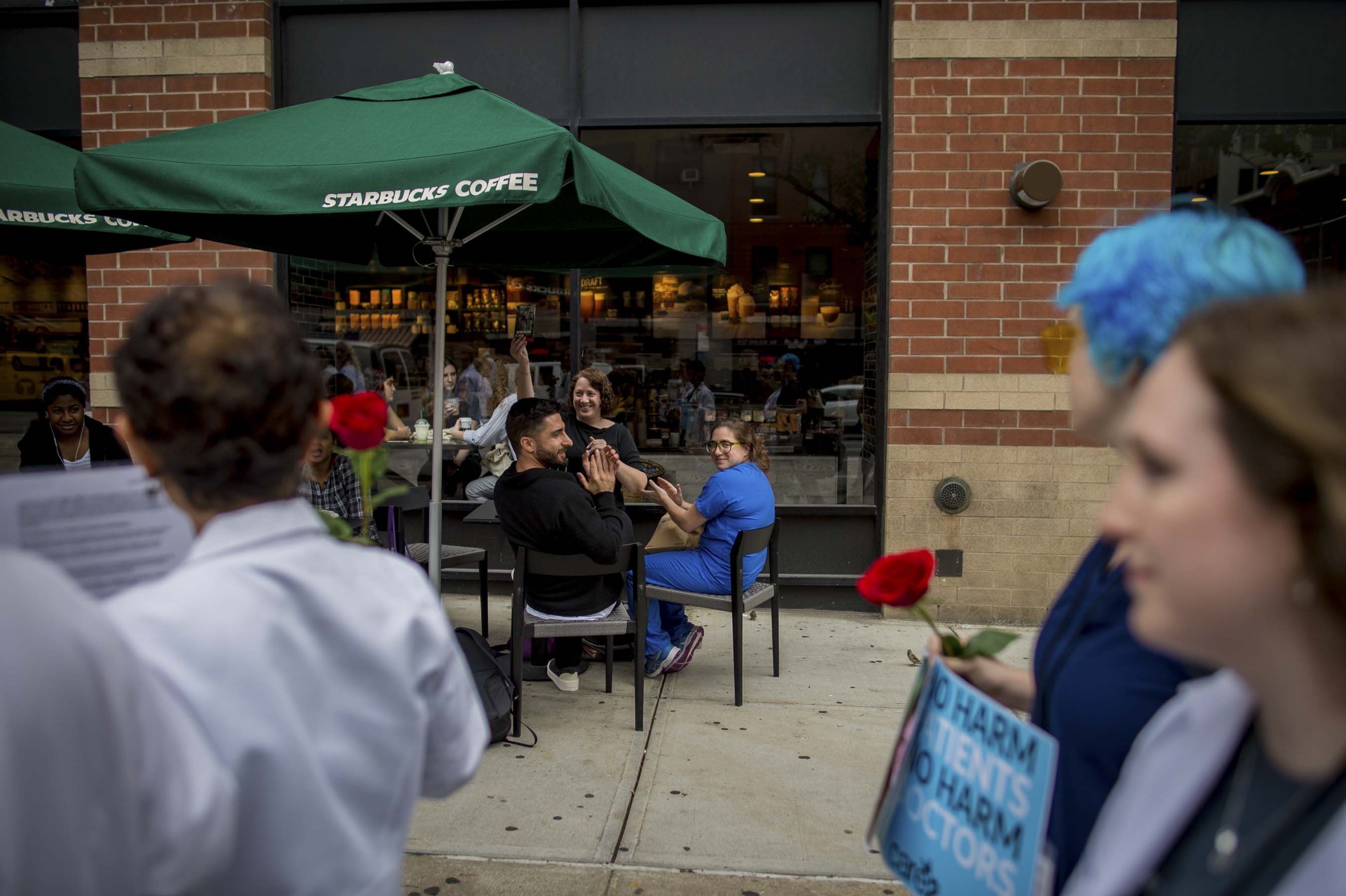
Cheering and applause from resident physicians at Starbucks!
* * *
Pamela Wible, M.D., has devoted her life to medical student and physician suicide prevention. She’s also a solo family doc practicing in Oregon while running a free helpline for suicidal physicians on the side. Dr. Wible is author of Physician Suicide Letters—Answered (download free audiobook here). Photos by Jonah Markowitz, Mike Young, GeVe. Video by Zinaria.

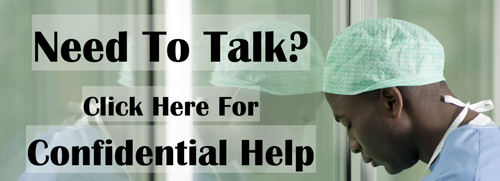

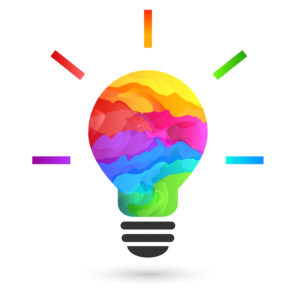

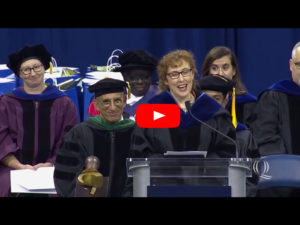
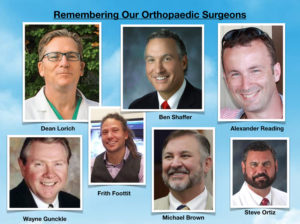
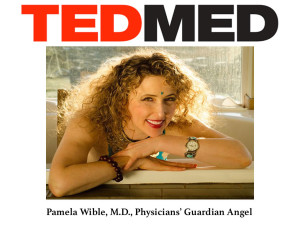
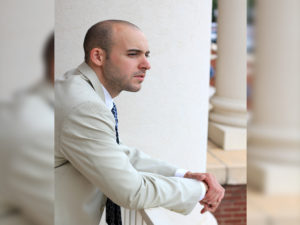
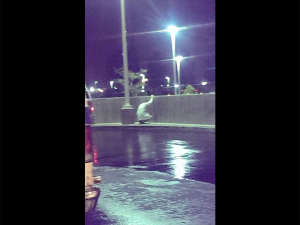
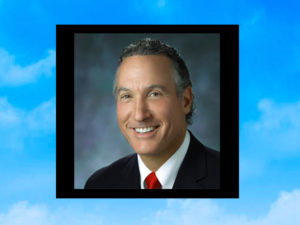
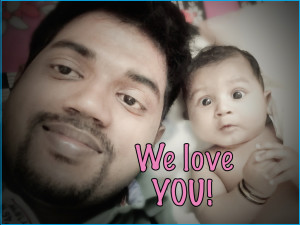
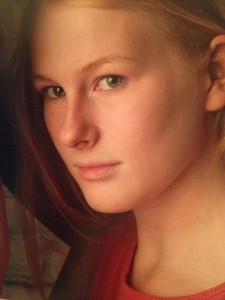

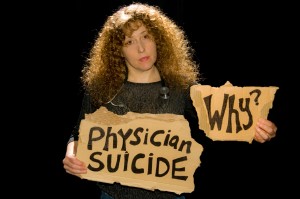
I’m incredibly full of emotion listening to this! I’m so pissed off!!! And I’m profoundly sad. And a little bit anxiety-ridden from reflecting on the memory of the trauma that I experienced a practitioner in our medical system. And a little in despair about how I can go back to practicing the kind of medicine that I believe in without being re-exposed to all the toxicity. But mostly, I am extremely grateful that Pamela has chosen to shine the spotlight on this huge problem in our health care system.
How would you like to practice medicine? What’s your ideal scenario? There are so many ways to contribute without getting exploited and locked into a toxic workplace. What’s your specialty?
I think all these suicides are very very sad and tragic. I think the female doctor that is shedding light to all the suicides is very courageous.
We are not going to have any doctors left if this continues. Obviously the
medical system is broken.
I notice that whenever I have a medical appointment my doctor seems to be rushed and I know that she has many other patients after me, like a cattle line. What to do? Maybe doctors need to band together and start looking into
their hospital policies and demand our politicos to start getting involved for the sake of the futures of our doctors now and the doctors that are up and coming.
Pamela Wibel is the champion for the cause. Thank you for your relentless and tireless battle to bring this to the public attention. Socialized medicine is a disaster and should be overturned immediately. I would invite everyone to watch EWTN’s brilliant documentary, “A Wolf in Sheep’s Clothing.” While is is not directly linked to physician suicides, it reveals the cause of socialism a.k.a. liberalism, a.k.a. progressive or Marxist movements in America. For those who are inclined to use their brains, one can make a leap to the causation between forcing ideals upon society in direct contrast to natural law. I surmise forcing anything upon a “thinker” that assaults one’s moral compass is too much for any one to bear. One can read between the lines in this comment. The bottom line, the rise of the administrative state, has reduced the value of the individual, tragically and reprehensibly.
I have worked in hospitals and physician owned clinics, surgery centers and skilled nursing facilities it troubles me that Drs do get so stressed, so do nurses, especially in the business of healthcare. We choose this profession to care for people. We seem to never have enough time to do that, but then there are pts that demand we spend the time they think they need… It is a no win situation, then you feel depressed because you should have done more. I also think we raise people to be needy. Everyone wants to be cared for… Not care for themselves. It is frustrating and you can’t help. They need to help themselves, but if you let them know that that is what will help them and their condition you are the bad guy, accused of malpractice…etc. so it is hard. Very very hard to be a figure that cares and cares for you. I wish i had the power to help those who think suicide is the only way. We need to learn to accept pain in it’s many forms, admit weakness in it’s many forms, and accept the fact we are human and we will always do it best even though somedays, it may not be as sufficient as someone else.
Besides feeling extremely saddened by the deaths of these individual physicians, I am and have been angrier than hell. As a practicing physician I have been burned out and increasingly angry. Thankfully, I am in the process of getting out of the system. But the so-called medical system (including medical education) with its control by politicians, government entities, administrators and bean counters is the cause. I am angrier than hell at my colleagues who ‘allowed’ the system evolve and put us in this situation. I am glad Pamela is focusing on the issue and the individuals. The vast majority of my colleagues are too short sighted to acknowledge how deep the problem is. It will take a movement of individuals (victims and their loved ones) to make any real changes. In the meantime, if we are losing the brightest, most educated and gifted healers what will happen to the health of the rest of us?
What a courageous group of providers represented in photos and video, but CEOs, CFOs, risk managers, politicians, investigators etc— where are you? The US has the most expensive healthcare system in the world, but somehow this system doesn’t seem that good. Emily — Medical Error Transparency Plan FB group.
God bless you Dr. Wible for what you do.
I have contemplated on replying, as I am at the bottom of the food chain. Nevertheless, I feel compelled to share this, in hopes that someone, somewhere, will take this into full account, and not just overlook it.
I have witnessed through your writings that you are passionate about the subject of suicides, as am I. So, I would like for you to consider something into your research variables:
Neurotoxins. Not just by medications. Not just by cleaners, or air fresheners, not even laundry detergents, but by hidden toxic black mold: Stachybotrys.
Thank you for taking the time to read my short plea.
Sincerely,
Healthcare field for 20 years, at the bottom of the chain